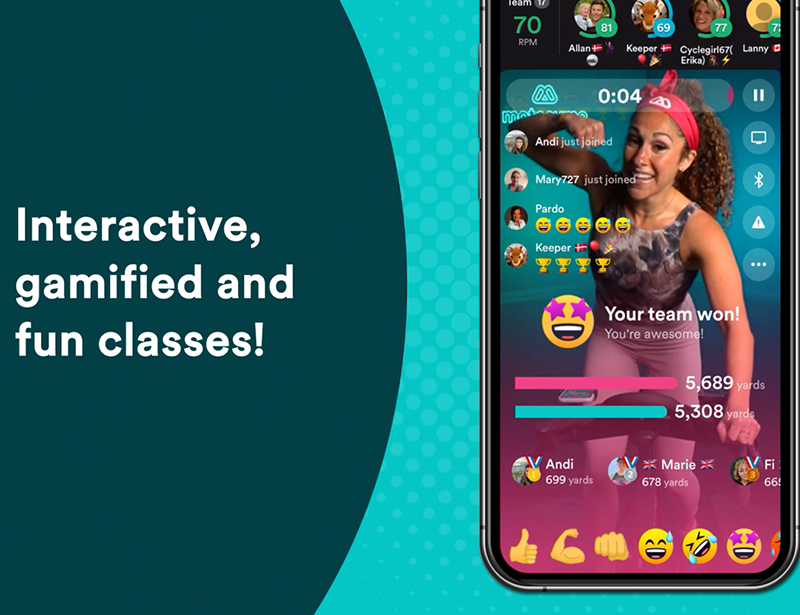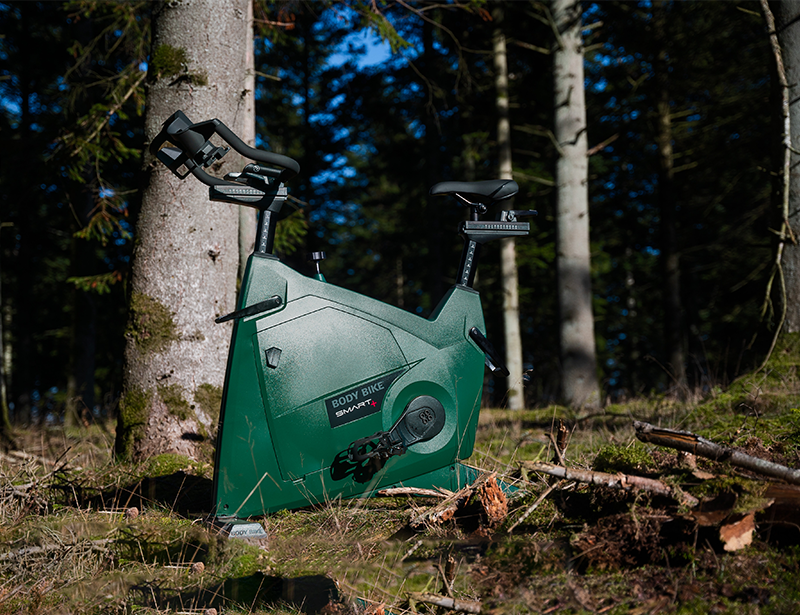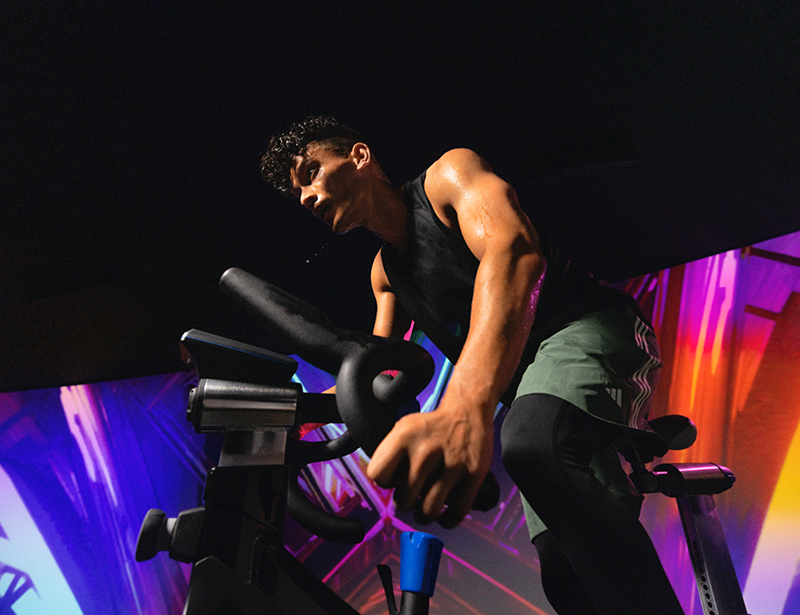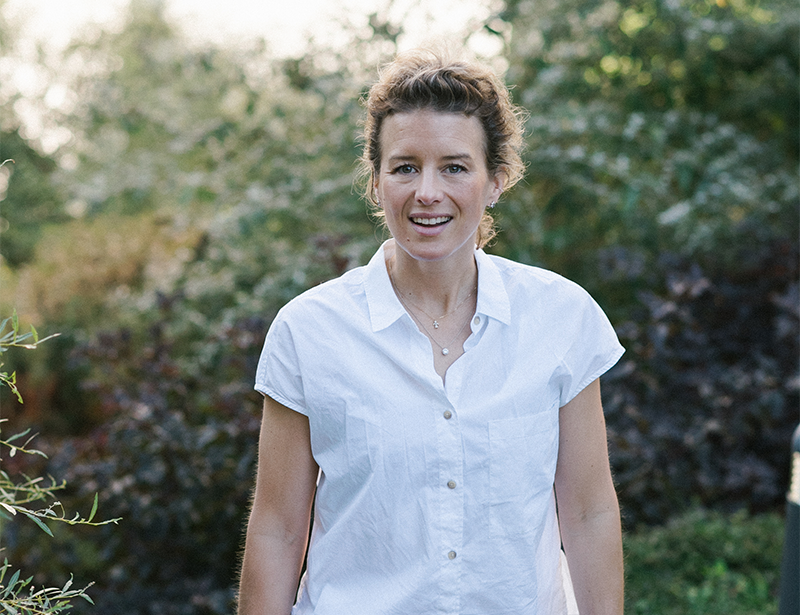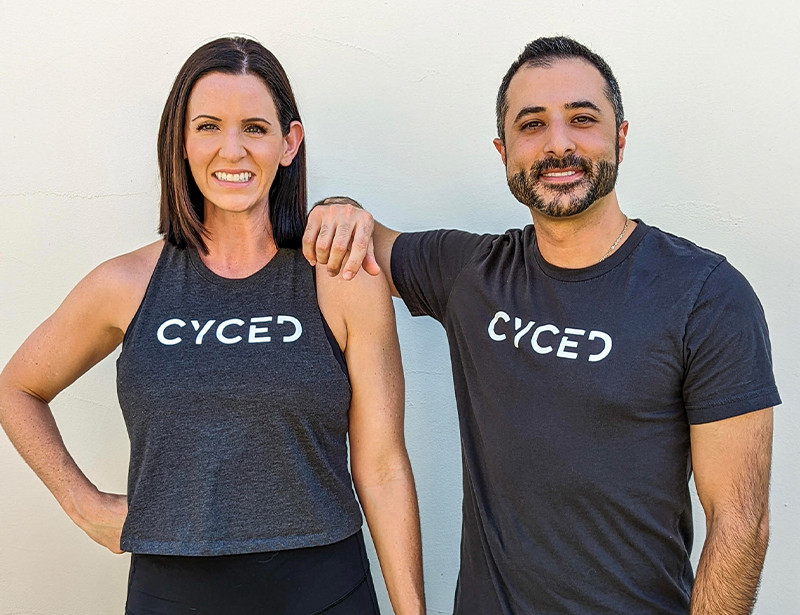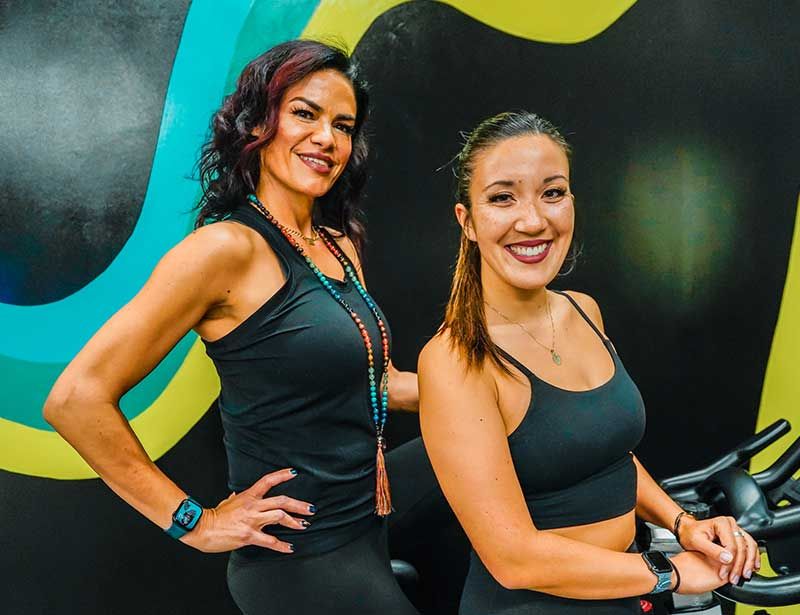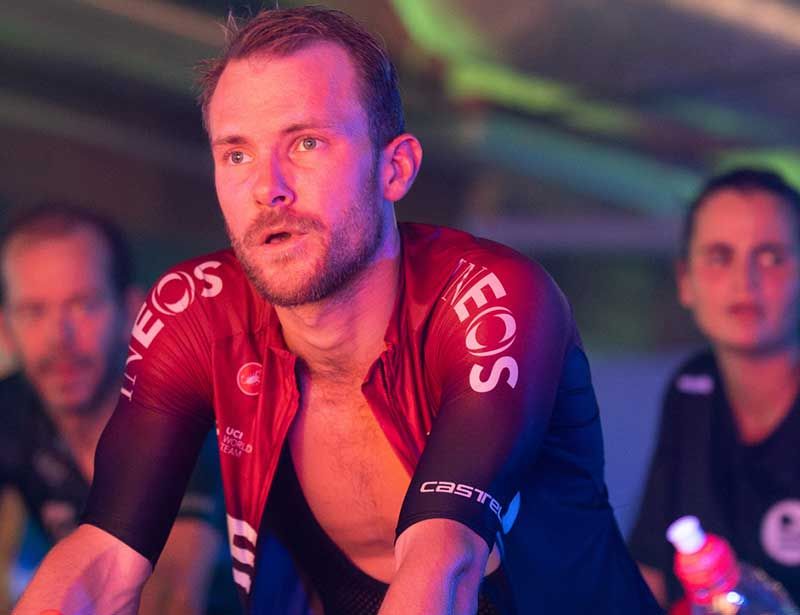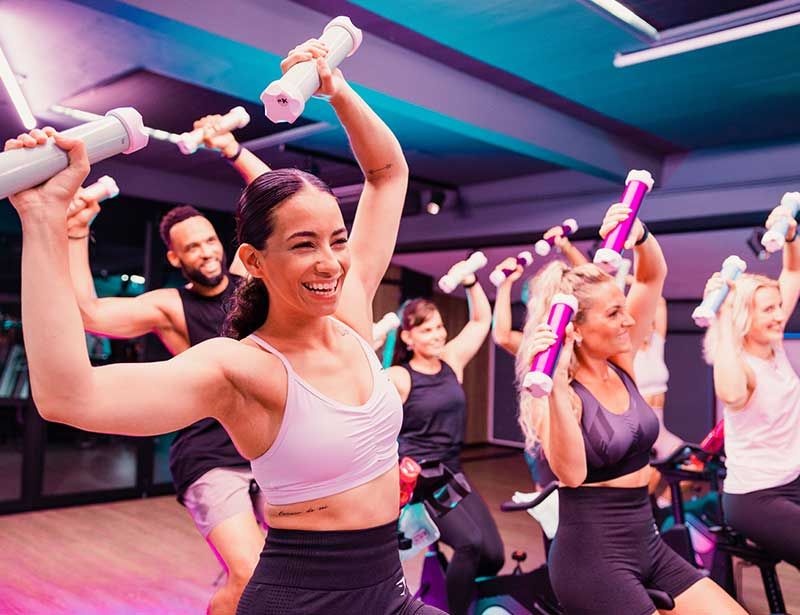Author: Pernille
A sustainable agenda
Sustainable gyms
Around the world, we’re seeing fitness facilities tackle the dual challenges of global warming and spiralling energy costs through sustainable initiatives that range from green energy contracts to solar power installations. Our recent supplement – A Global Crisis? – explored this topic in depth.
Specifically in the area of indoor cycling, we’re seeing growing interest in technology that captures the energy riders put through the pedals, turning it into electricity.
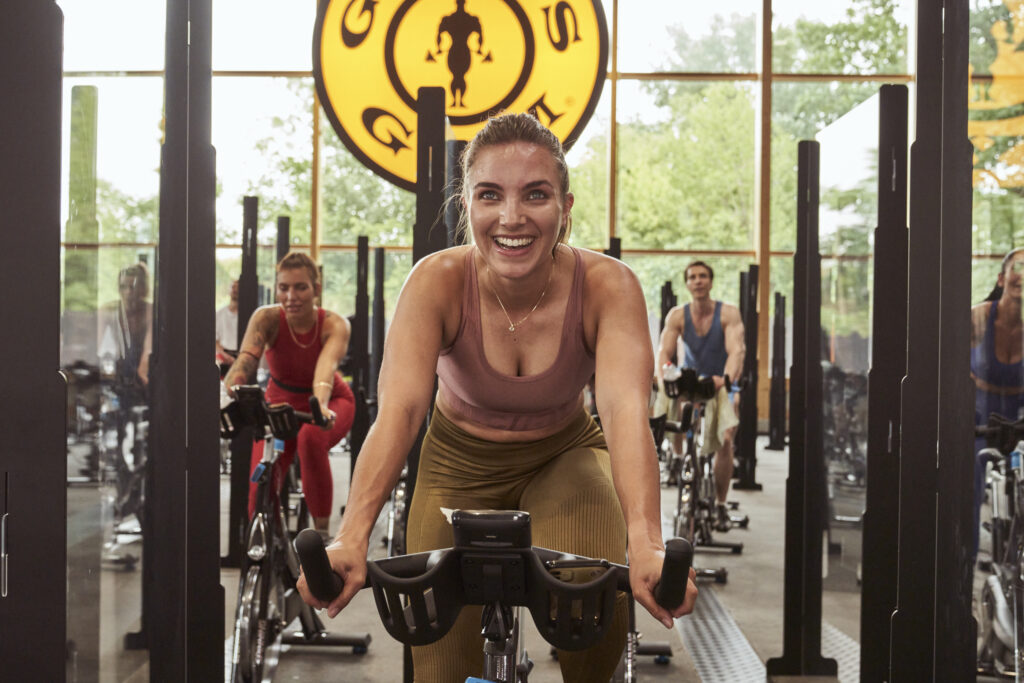
One exciting pilot project is underway at Gold’s Gym Campus Europe in Berlin – an impressive 5,200sq m, CO2- and climate-neutral facility that’s the first gym in Europe to achieve LEED Platinum status. Two years ago, in partnership with the Technical University of Berlin, Gold’s Gym developed cutting-edge technology that it embedded in 150 ‘Boost Bikes’. Not all are currently in use, the quantity scaled back to meet everyday class requirements, but when all 150 are in action, they can generate “enough electricity each month to shave one million men”, says Pierre Geisensetter, head of brand & communications at Gold’s Gym.
In practice, the electricity generated is captured and used within the Gold’s Gym campus, where other trailblazing innovations include 10m-tall trees in the gym’s endurance area that filter out pollutants from the air; extremely hard-wearing floors made from discarded car tyres and cork; a cogeneration unit that runs on biogas; solar panels that harness the sun’s energy; and wall tiles made from recycled computer monitors.
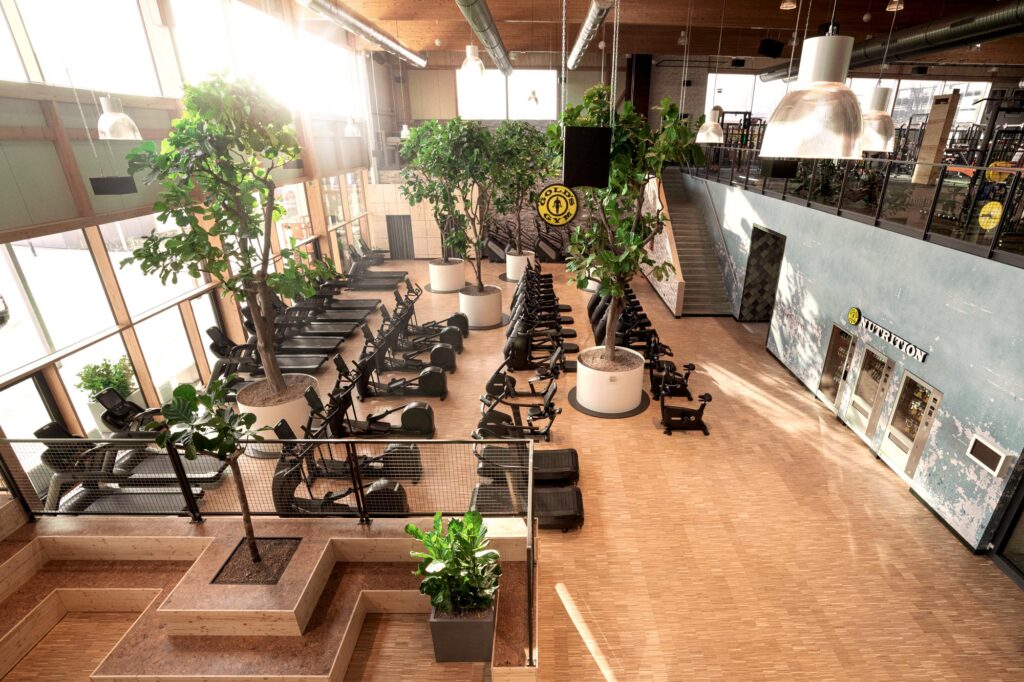
Gold’s Gym isn’t the only operator to be capturing human power from bikes, of course: we’ve previously reported on the commitment of Terra Hale in the UK, while numerous clubs around the world are using SportsArt’s ECO-POWR equipment to convert muscle power into electricity.
The Gold’s Gym project is, however, the largest we’ve come across in this space, and it harnesses proprietary technology. The RSG Group is clearly keeping the innovative, boundary-pushing vision of its late founder Rainer Schaller alive, making this initiative one to certainly keep an eye on.
“Being able to see real-time energy production provides a layer of meaningfulness to breaking a sweat”
Meanwhile, a great ECO-POWR example comes from The Imaginarium in Rochester, NY, US – a 836sq m, Net Zero showcase that includes a gym where 21 pieces of equipment generate 5 per cent of the building’s electricity requirements. The remainder comes from 92 solar panels (60 per cent) and two small wind turbines (35 per cent).
The 17 group cycling bikes, two recumbent bikes and two ellipticals have consoles that display Human Watts and Grid Watts: the former the electricity the user is generating, the latter what’s actually going back to the grid – always slightly lower, as ECO-POWR needs some electricity to operate.
Five per cent may not be a huge number, acknowledge The Imaginarium team, but “it’s a very visual and direct way visitors can contribute to our Net Zero energy goal. Being able to see real-time energy production provides a layer of meaningfulness to breaking a sweat and brings a new understanding to how small changes or shifts in everyday activities can be a part of a larger movement.”
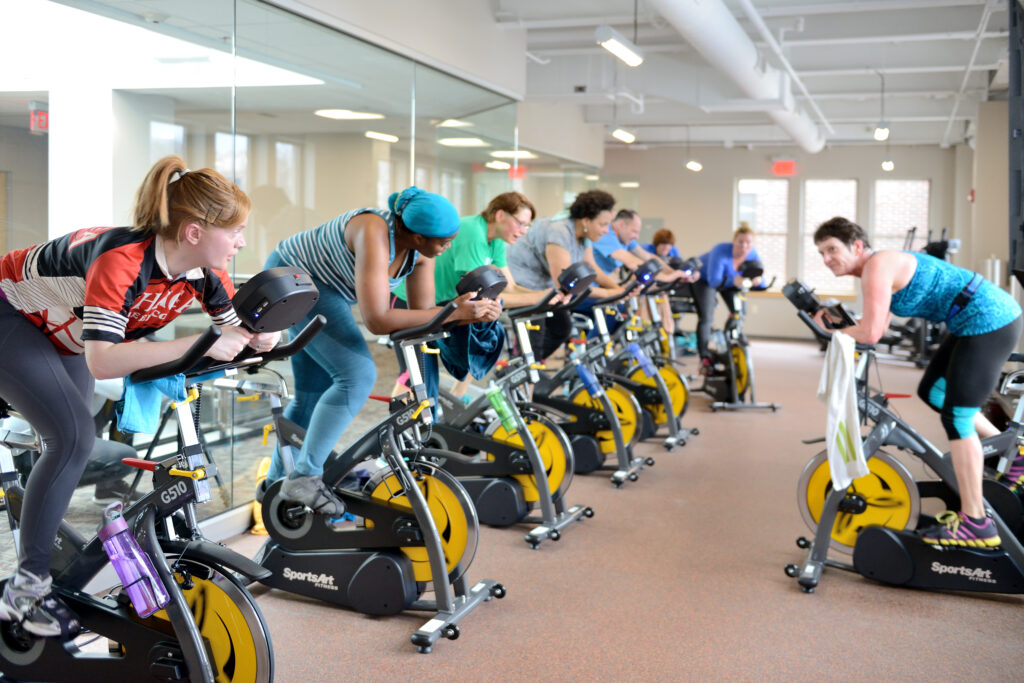
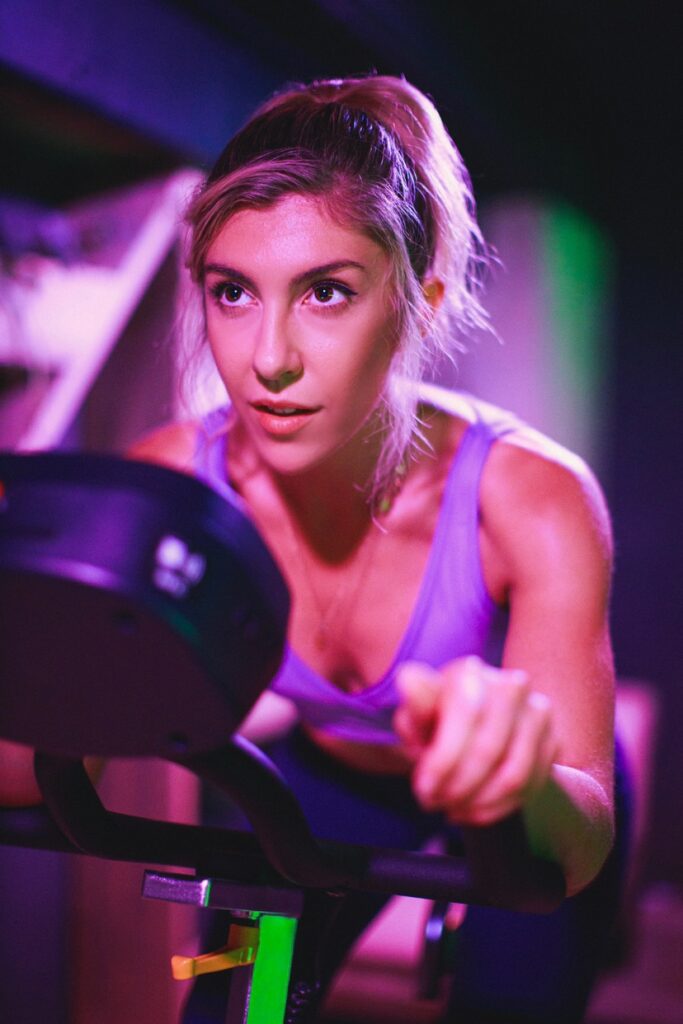
Sustainable manufacturing
“Plastic, and more specifically society’s excessive use of it, is putting our planet under huge pressure,” says Uffe A Olesen, CEO at BODY BIKE International.
“We see garbage islands the size of continents gathering in ocean currents and marine life perishing. Meanwhile, on the land, it’s hard to go anywhere without seeing plastic bags and packaging strewn around the place – a terrible human footprint on the planet.
“It’s an unacceptable situation, but at BODY BIKE we believe that if we all do our small part, we can begin to redress the balance.
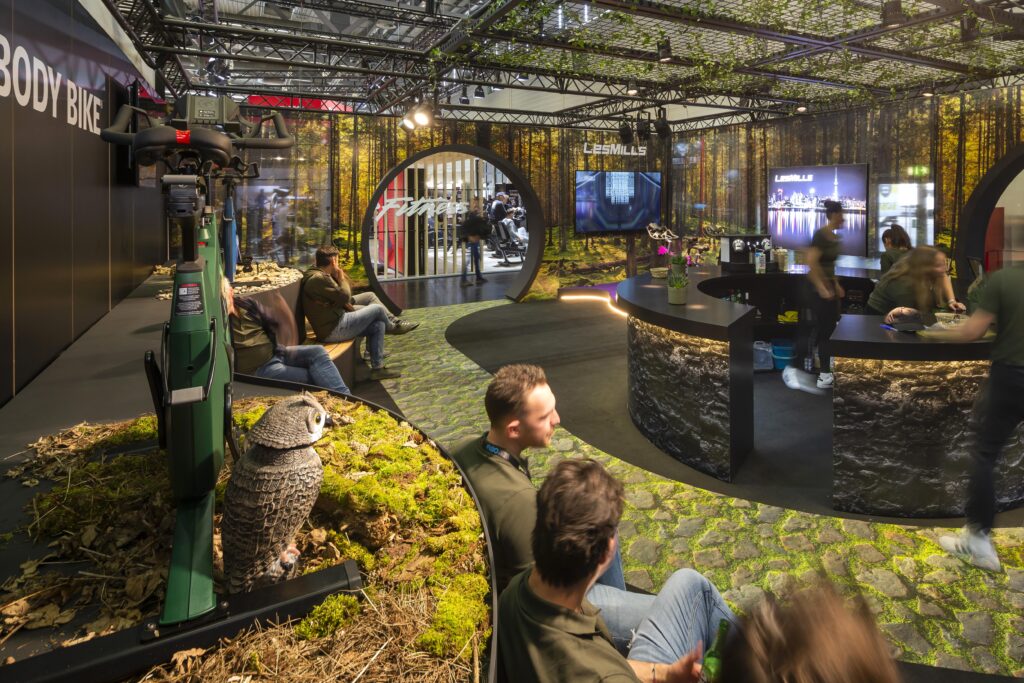
“This is just the beginning for us: we’re determined to set new standards for sustainability in fitness equipment”
“We first put our passion into action when we launched BODY BIKE Smart+ OceanIX in 2019: the first piece of commercial gym equipment in the world to be manufactured using recycled plastic fishing nets. It just felt like the right thing to do, and we did it without any compromise in the quality of the product or the ride experience.
“Available in just one distinctive colour – the ocean blue of the recycled nets – OceanIX has proved very popular, accounting for around 20 per cent of our production. Because it isn’t just a piece of gym equipment. It’s part of a cause, and something that appeals to everyone who wants to do their bit for the planet.
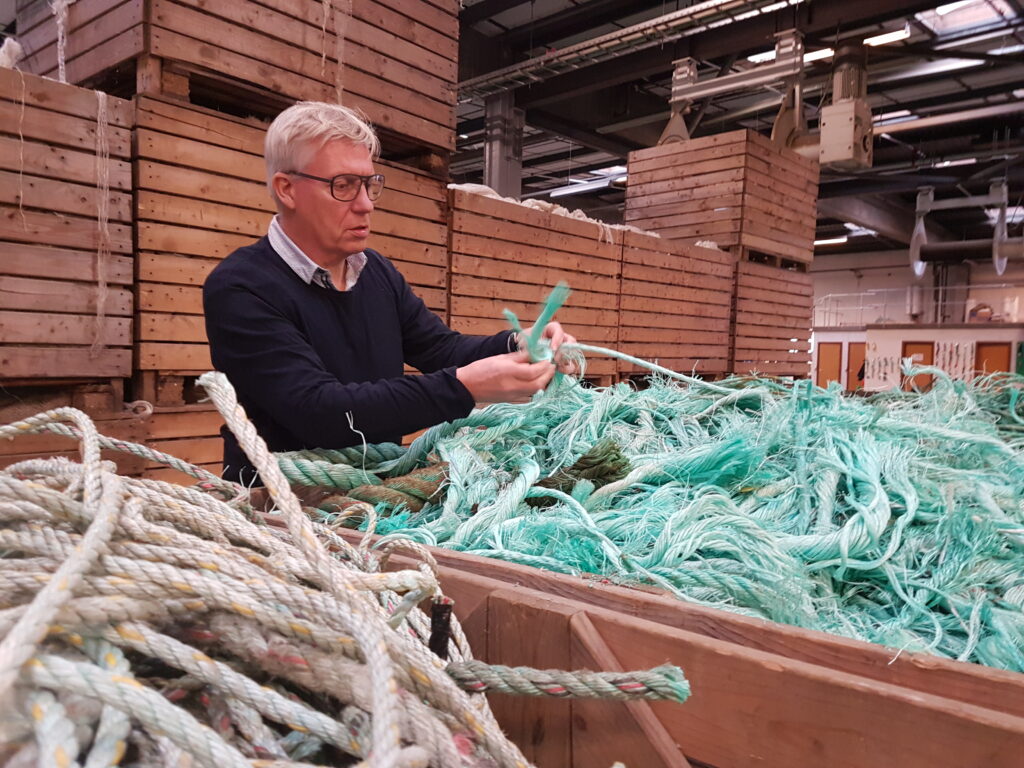
“Off the back of this success, we challenged ourselves to expand our sustainable range and turned our attention to land-based waste. The hunt began for recycled ABS – the strong, stable, highly resistant plastic we already use in the manufacture of our bike covers.
“The result is the new BODY BIKE Smart+ Forest Green, officially launched at FIBO in April. Manufactured using 25 per cent recycled ABS, once again we’ve achieved this without any compromise in the ride experience or product quality and durability. It also looks great: I’ve always wanted to do a bike in the deep green of classic cars, and combined with the black metalwork it delivers a very high-class finish.
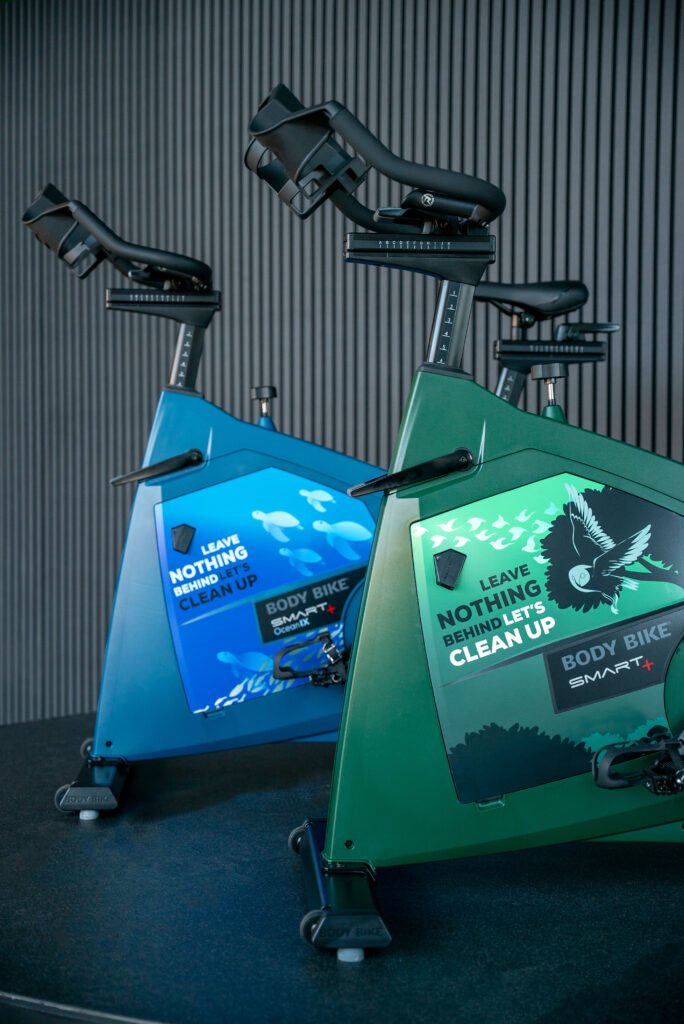
“And this is just the beginning for us: we’re determined to set new standards for sustainability in fitness equipment. So we will keep exploring. We will keep going further in our search for sustainable materials that also support our quality standards.
“These bikes cost more to manufacture – a fact of working with recycled materials – but we price them the same as our other bikes. We don’t want to put any obstacles in the way of people making sustainable decisions.
“Our goal is now to bring all our existing models of BODY BIKE in line with these new sustainability standards within the next two years, incorporating a minimum of 25 per cent recycled ABS in the manufacture of every model and every one of our 10 case colours. I see this as my personal mission.”
Sustainable sportswear
“People talk about organic cotton and clothing made from recycled plastic, but I’m afraid this is greenwashing that avoids the fundamental truth,” says Troels Vest Jensen, CMO at Danish sportswear specialist Fusion. “Textiles are not sustainable, meaning the fashion industry’s biggest problem is over-consumption.”
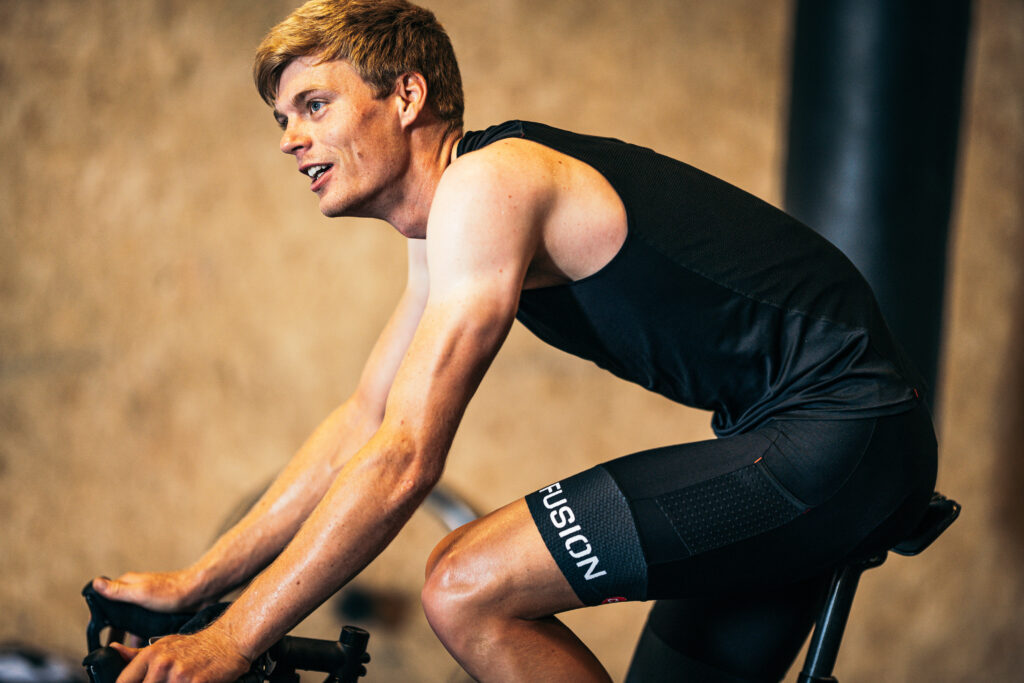
“Textiles are not sustainable, so it matters how long you use a product. You also shouldn’t produce more than you can sell.”
He continues: “Our approach to sustainability is therefore based on two vital factors. First, it matters how long you use a product. Second, you shouldn’t produce more than you can sell.
“In Denmark, the average organic cotton T-shirt is worn just seven times before it’s discarded, but it takes 1,500 litres of water to create that T-shirt. How is that sustainable? The Danish Consumer Council also found CO2 from production could be reduced by 44 per cent if all clothing were worn twice as much.
“Meanwhile, many retailers pre-order cheap clothes in bulk from China, based on little more than educated guesses as to what consumers might want to purchase by the time the stock arrives months later. They end up with the wrong items, and too many of them, so have to discount to get rid of it all. Some even burn it.
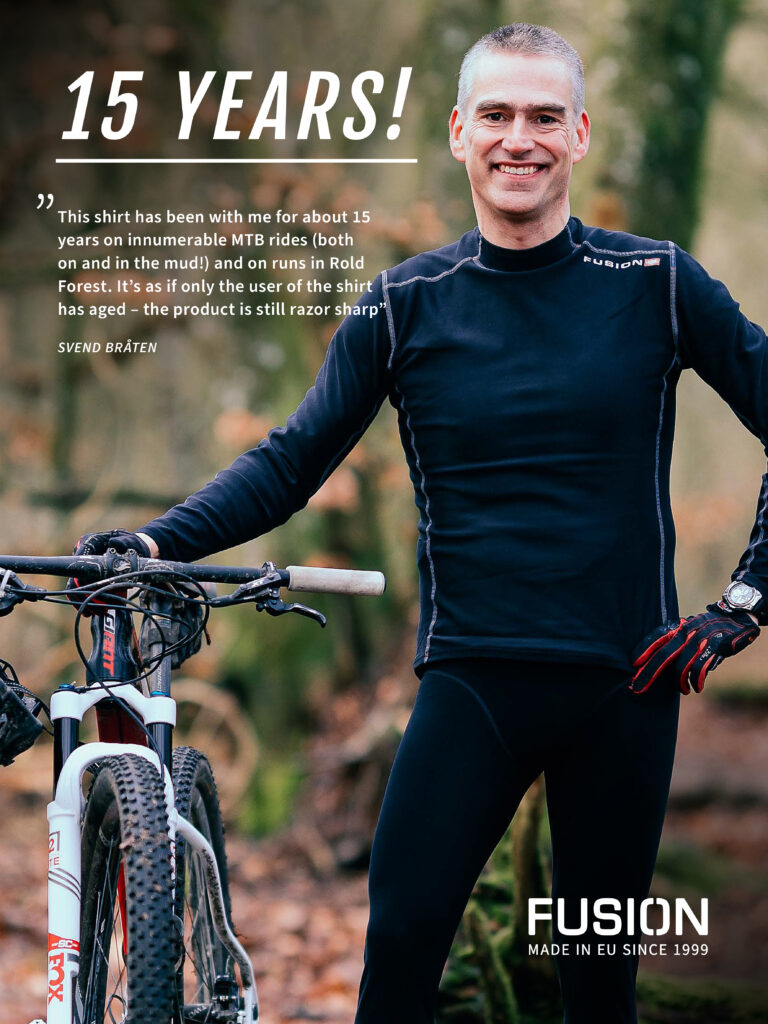
“Fusion does things differently. We’re based in Denmark, manufacture in Lithuania in small batches – we receive new product twice a week – and ship only to countries where we can deliver within two to three days. It means the retailers we work with always have exactly the stock they need to meet current demand: they order one week only what they know will sell the next. There’s no wastage.
“Not only that, but our sportswear isn’t about fashion. It’s about timeless design, comfort, functionality and durability, both in terms of manufacturing quality (for more information, please see Clothing for when it matters) and what we call emotional durability.
“We’re trying to shift people’s thinking around sustainability by encouraging them to feel proud about wearing old clothing. We’re certainly proud when we see our elite athletes competing in five-year-old Fusion sportswear, while our advertising shows people still training in 15-year-old Fusion wear. Our products are that good. They’re built to last. We aren’t interested in bringing out new colours each season to push people to purchase the latest look.
“This is what ‘sustainable’ really means in the world of textiles, and our processes and products are designed to deliver it.”
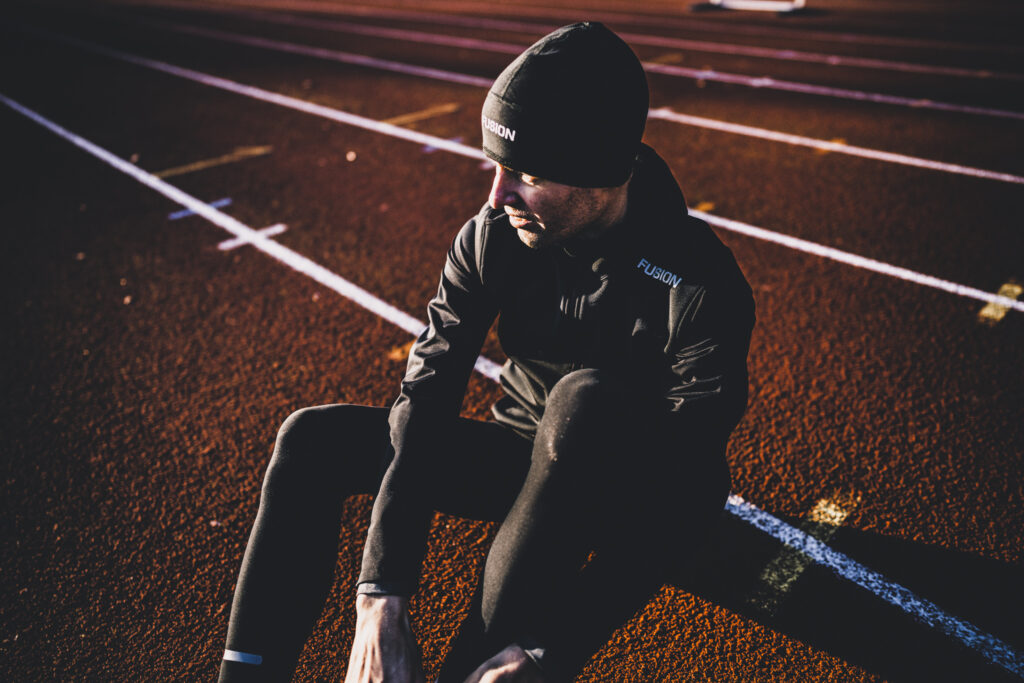
The science of cycling
#1 Cycling is an enjoyable way to kick-start a fitness regime
With pumping music, motivating instructors and tested programming, indoor cycling has proven to be a particularly effective way to get hooked on exercise. This was highlighted by an eight-week study where exercise newbies eased into exercise with three Les Mills RPM™ indoor cycle classes a week – and the vast majority didn’t miss a single workout.
Bryce Hastings, Les Mills’ head of research, says the 95 per cent compliance rate is almost unheard of in a fitness trial. “It speaks volumes about the enjoyable nature of the workout and its positive effects,” he adds.
#2 Indoor cycling gets you fit… fast!
Powering through just three cycle workouts a week can do wonders for your fitness. Research shows that just eight weeks of regular cycle workouts can lead to improved cardio fitness – we’re talking an 11.8 per cent increase in VO2 – as well as reducing body fat, blood pressure and cholesterol levels.
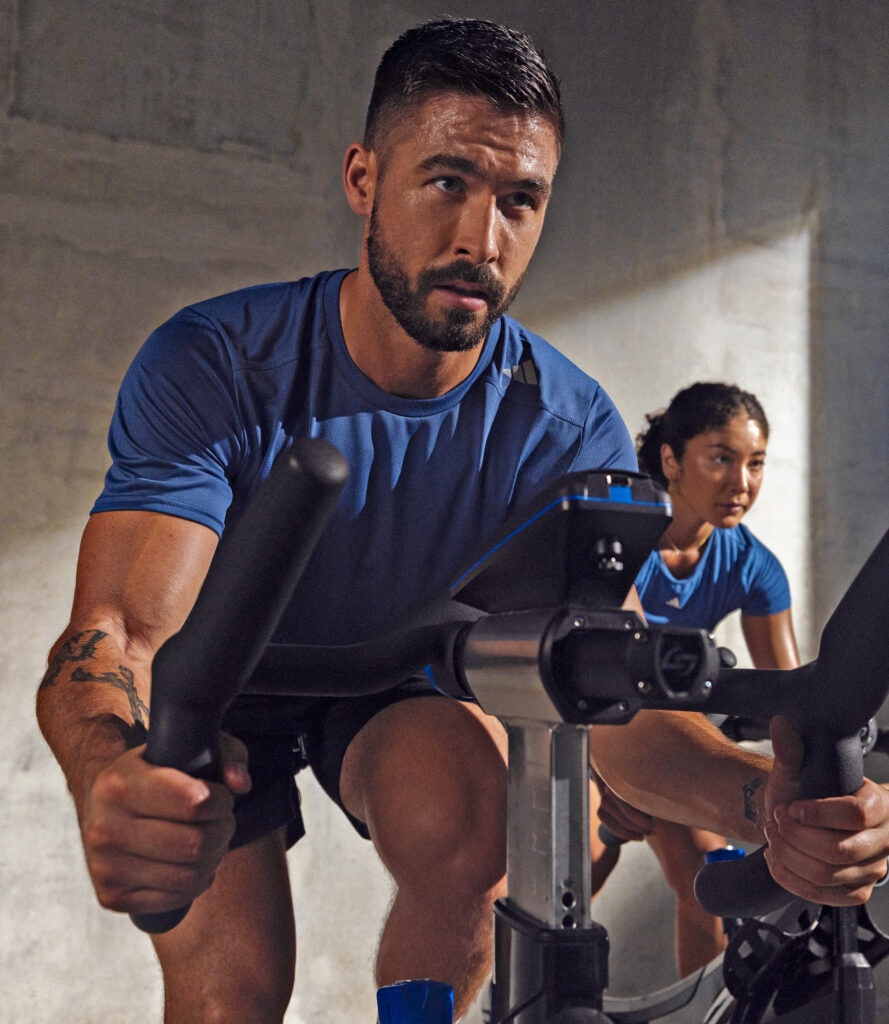
According to researchers, it’s the varying levels of intensity within the cycle workout that are an important factor in maximising muscle adaptations and producing comprehensive health benefits.
It’s why workouts such as RPM are based on the science of cardio peak training, which combines the cardio endurance of steady-state training with the transformative fat-burning benefits of high-intensity interval training. The workout is structured to maintain your heart rate at an aerobic training base of between 60 and 80 per cent of your maximum heart rate, interspersed with peaks of intensity that push you to 85 to 90 per cent of your max.
#3 High-intensity interval cycling gets you even fitter
There are plenty of studies highlighting how high-intensity interval training (HIIT) drives muscle activation and fat-burning capacity, but most of these studies are based on conventional weight-bearing HIIT exercises such as burpees, squat jumps and lunges.
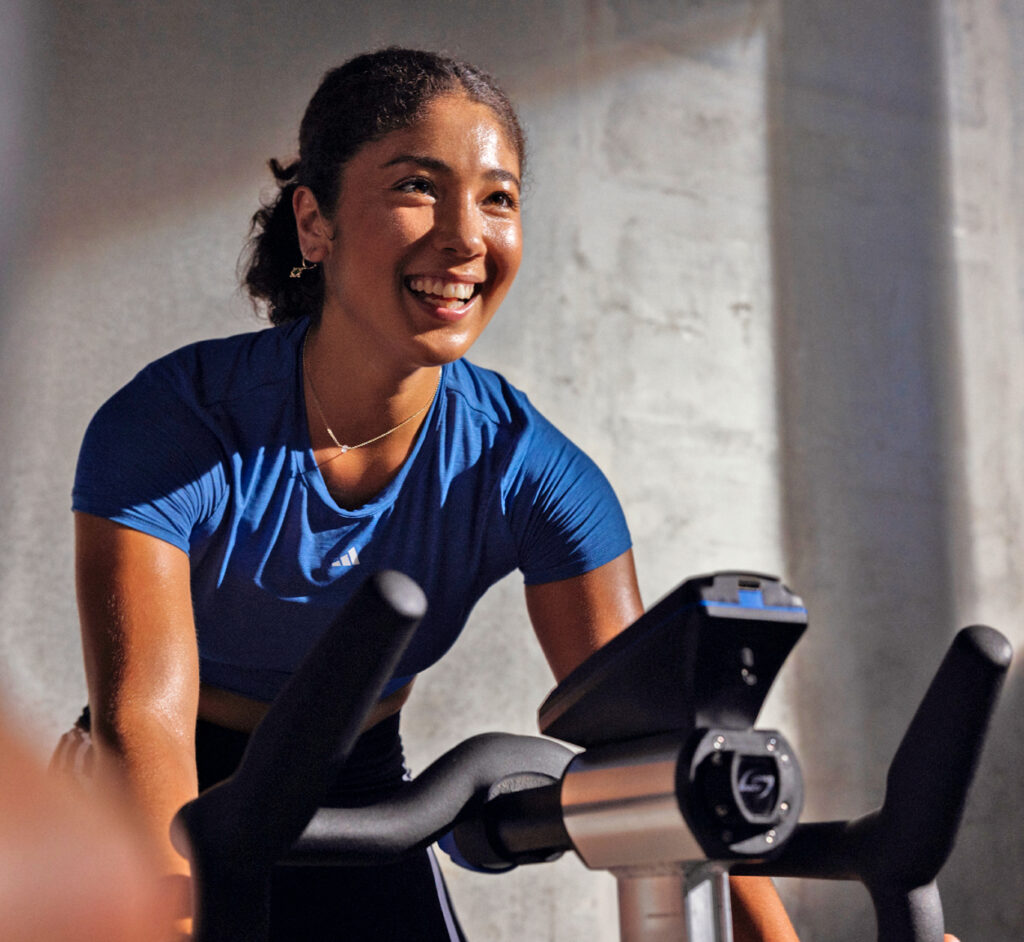
The exception is an interesting study by Professor Jinger Gottschall at Penn State University in the US, which detailed how high-intensity interval cycling can be a great, low-impact way to enjoy the transformative results of HIIT.
Study participants added just two 30-minute Les Mills SPRINT™ workouts – Les Mills’ HIIT cycling programme – to their weekly regime and significantly improved cardiovascular, metabolic and musculoskeletal fitness. They also reduced body fat mass and blood pressure, while enhancing glucose tolerance and strength.
#4 Cycling cuts fat from your waistline
Regular cycling doesn’t just result in toned and shapely legs: it can be a great way to reduce your waistline too. One study showed that in just eight weeks, exercisers doing RPM three times a week managed to cut an average of 3cm from their waistlines, as well as reducing body fat by 13.6 per cent. This is important, as fat that’s stored around your middle is often dangerous visceral fat; a disproportionately large waistline is an indicator of several serious health risks.
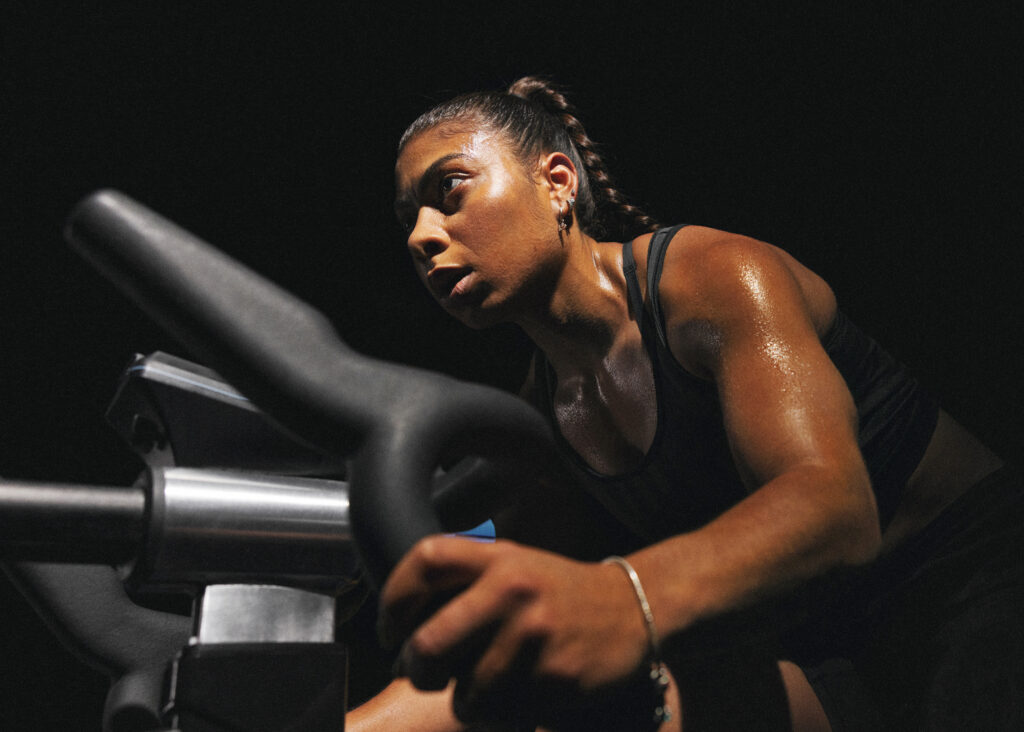
#5 Cycling helps your mental health
Jumping on a bike is shown to be one of the best ways to beat stress, depression and poor mental health.
Over a three-year study, 1.2 million adults recorded their physical activity, as well as detailing how many days they experienced any stress, depression or other emotional issues. Researchers concluded that cycling was the second most beneficial activity in terms of emotional wellness, beaten only by team sports.
#6 Cycling can slow, and even reverse, the ageing process
Forget pills and potions: research indicates that pedal power could be the elixir of youth.
In a study of 125 amateur cyclists, researchers found the cyclists maintained consistent muscle mass and strength as they aged, as well as stable levels of body fat and cholesterol. In the process, they reduced their risk of heart disease, diabetes and cancer, while their production of disease-combatting T-cells was still functioning as well as in much younger people.
There’s even evidence that cycling can reverse the ageing process and shave up to 20 years off your biological age. Sound too good to be true? Here’s the evidence.
If that isn’t a reason to jump on the nearest indoor bike right now, we don’t know what is!
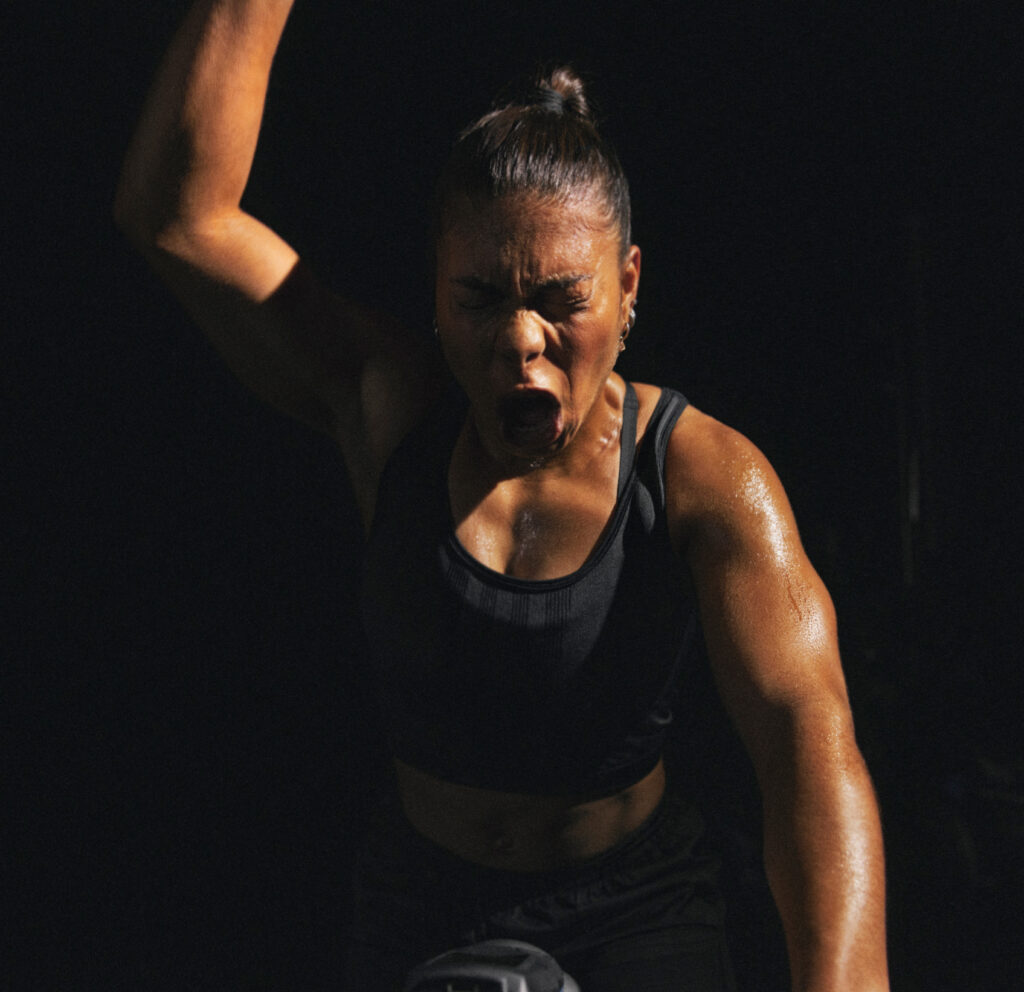
Emma Hogan is a writer for global group workout leader Les Mills. A longer version of this article was published on Les Mills’ Fit Planet in November 2022.
Gundula Cöllen-Sorger
What’s the story behind BECYCLE?
I’m from Germany, but I’ve moved around quite a lot: school in England and university in London, time spent working for a consultancy firm in Sydney and so on. Each new city I moved to, I’d find a place to work out. I always saw that as my opportunity to meet people – much easier than trying to make connections in the workplace.
There weren’t really boutique fitness studios back then, but there was already a trend – especially in Sydney – towards a more personalised set-up, with small hot yoga studios, PT spaces and so on. Here, you were part of a community: a name, not a number. When I returned to Germany in my early 30s, I really missed having somewhere like that.
“The body needs to do complementary workouts to feel good: yoga, strength training and so on. You can’t just do cardio”
I was still working in consulting then, but in 2015 I went to the Burning Man festival and everything changed. I found my love for cycling and music.
Stopping in Los Angeles on the way out, I tried SoulCycle for the first time and was really excited by it. And then Burning Man… it’s such a huge area that you cycle everywhere. Everybody picks up an old bike and dresses it in ribbons and lights – it gets dark in the desert at night! – and you’re cycling around constantly listening to music, because there’s music everywhere, with different DJs all over the place. You’re never without music. And you’re always cycling.

Experiencing this, having already experienced SoulCycle in LA, I started to ask myself why this wasn’t a thing yet in Europe. Why were our cycling experiences all in brightly lit rooms, in big box clubs, with music as mere background noise?
In the space of a week, I realised this was what was missing in Europe, and that it was my calling to bring it back to Germany. The whole idea of founding BECYCLE pretty much happened at Burning Man.
How did you get it off the ground?
When I came up with the idea, I was introduced to another lady – Viola Huetten – who had been thinking along similar lines. Also German, she was living in New York, and together we set about trying to find investors who wanted to help us build this business in Germany. With no financial crisis or pandemic at the time, there was a lot of appetite to bring successful American businesses to Germany: it wasn’t hard to tell the story or get funding through Viola’s New York network.
“It wasn’t hard to get funding. The challenge was finding a suitable space in Berlin. People didn’t take us or our concept seriously.”
What was more challenging was finding a suitable space in Berlin for our first club. The owners of the buildings we looked at didn’t take us or our concept seriously. They saw two women in their mid-30s and the track record of fitness businesses – which the banks had never seen as a great bet – and they laughed at us.
Finally we found a building in Berlin Mitte, a really good neighbourhood right in the centre of Berlin. The owner still laughed a bit, but he wanted to see if we could make it happen. We had to do everything from scratch, funding the whole renovation and fit-out ourselves, but we knew location was everything and we were prepared to do it.
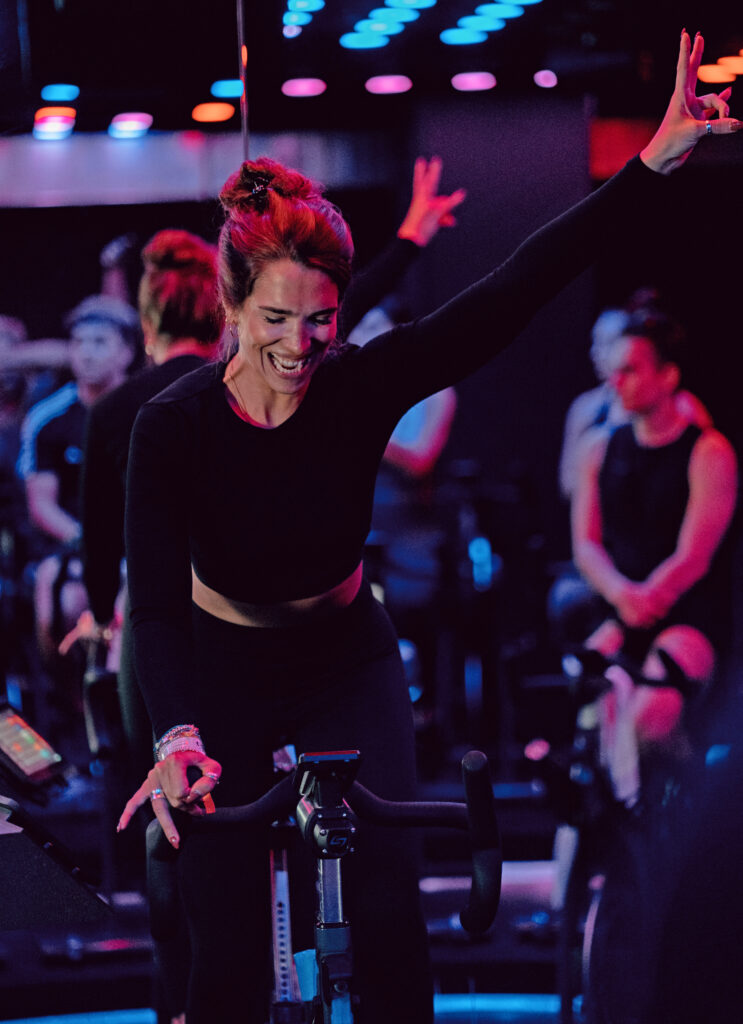
When did you open?
We finally opened our first BECYCLE in 2016: a 550sq m club with a much bigger concept than originally intended. We’d planned to create a cycling studio, but we ended up creating a place where people came together, with a café and huge community area, kids’ activities, a cycling studio and a second room for yoga, barre, HIIT and now also mat pilates.
My background obviously isn’t in fitness, but I just had a gut instinct that people wouldn’t want to cycle four or five times a week. The body needs to do complementary workouts to feel good: yoga, strength training and so on. You can’t just do cardio. So I pushed to get the broader concept through and we managed to persuade the investors, and in the end it’s what’s seen us through the pandemic. People’s mindset changed during that time and we now have a lot of customers who don’t even cycle at all, so it’s been really positive to have a more holistic offering.
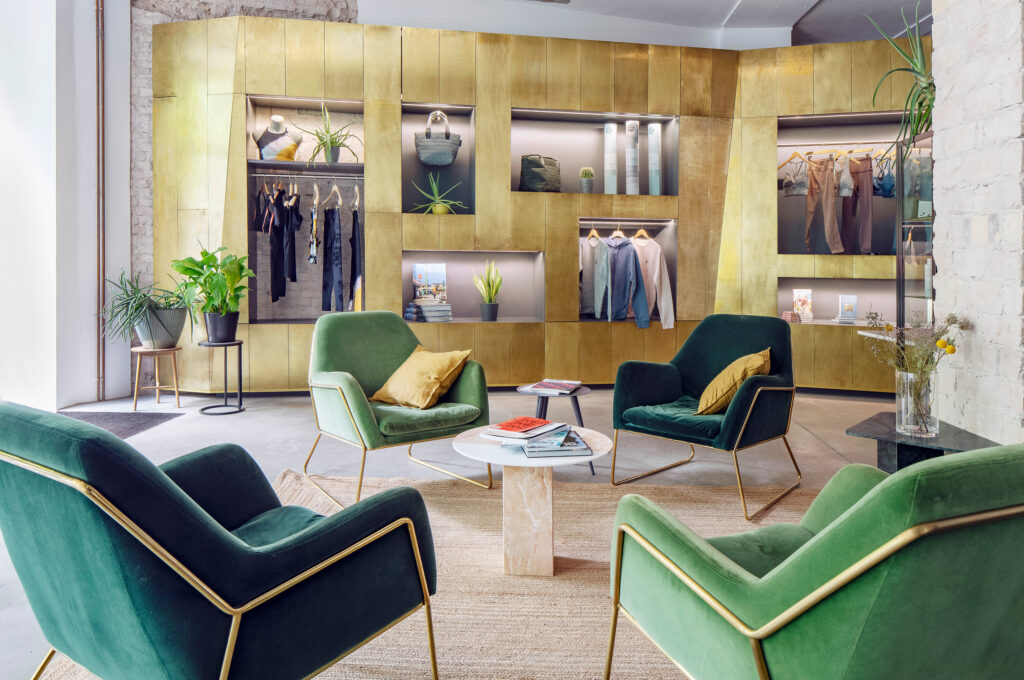
And we encourage people to do a bit of everything: I know my best week is one where I work out four times and can do all the different modalities. Not everybody does that, of course, but the different classes really do complement each other. For example, we introduced mat pilates to meet post-pandemic demand and now people tell us the breathwork they’ve learned is helping them perform better in our cycling classes too.
What’s your style of cycling?
There’s nobody else in Berlin doing our style of cycling, which is performance-based like they used to do at Flywheel; we actually had one of the Flywheel master trainers come over to help develop our programming. We use metrics from the bike, riding to RPMs and watts, and we use leaderboards. It’s very much about improving your performance, not just having fun and dancing on the bike.
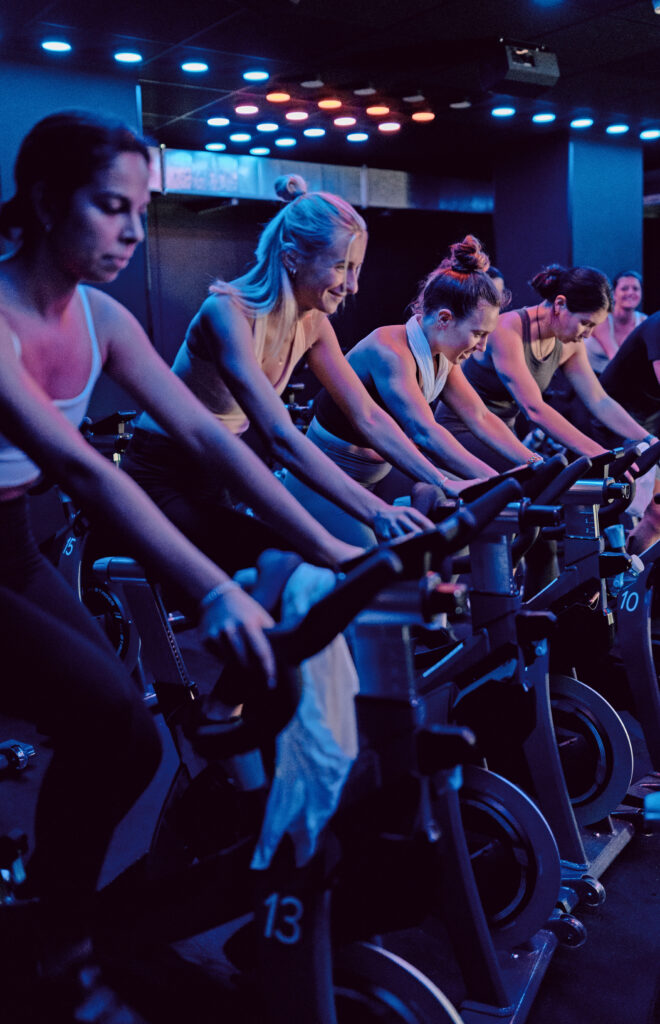
“Successfully expanding a business like this is hard. It’s a passion project and highly dependent on the people running it.”
It actually really intrigues me that most other studios in Berlin have gone down the party-on-a-bike route. I never would have thought Germans would be so open to workouts so rooted in pure fun rather than science, but they seem to be doing quite well.
And it’s great for us, because at the moment what we offer is unique. So while in most of our disciplines we simply ask our freelance instructors not to teach at other clubs in a 2–3km radius, we ask our cycling instructors not to teach our style elsewhere at all.
Our standard Ride class is 45 minutes, but we also have a 60-minute Ride+ class, while our 30-minute Ride Xpress is often combined with 15 minutes of strength for a full-body workout. We want the experience to feel personal and truly boutique, so our classes are quite small: for Ride, it’s 30 bikes; for yoga and barre it’s just 18 participants.
What are your clubs like?
We now have three clubs – two in Berlin and one in Düsseldorf – and they’re all third spaces where people come together, work and work out. They’re like mini Soho Houses, with lots of space to linger and connect.
We frontload our investment, working with the same architect across all our clubs to create distinct but equally beautiful spaces across our various locations: wonderful designs and special features, premium materials and so on. In fact, our club in Berlin Mitte won an architectural award.
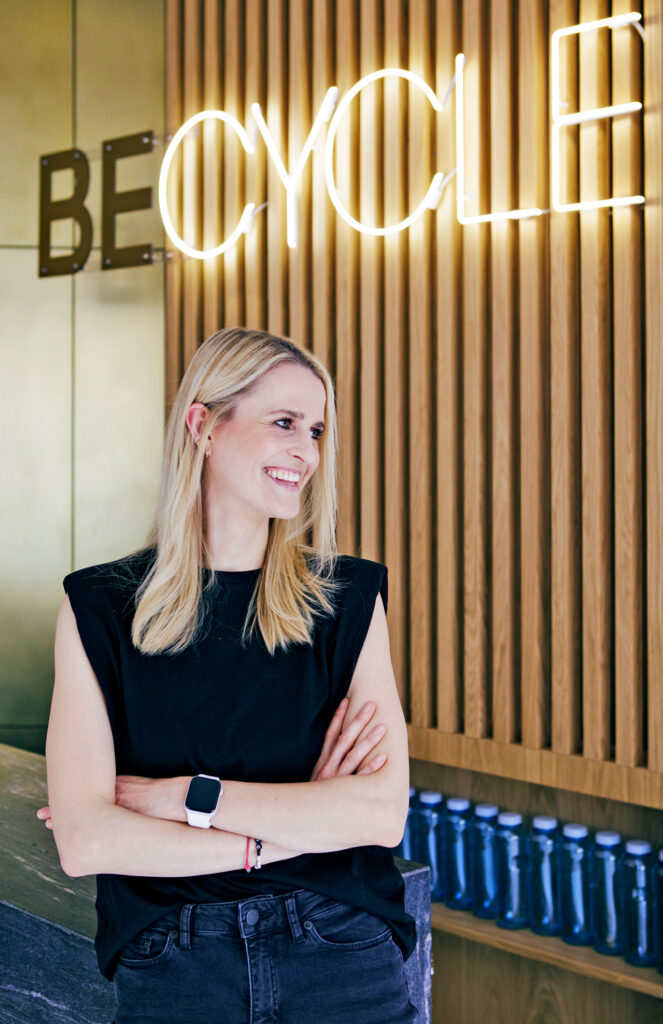
We also have a specialist lighting designer who’s known for the projects he’s done for a famous Berlin nightclub. We’ve worked with him on our Ride studios, creating ceilings where the lights pulse and chase overhead, spurring you on in your workouts with different colours and intensities and speeds.
The boutique market isn’t very developed in our markets yet, so for now our high design spec is a USP for us. We believe it’s worth the investment, because it means we don’t have to do much marketing. Our customers do it for us, taking photos of our clubs and sharing them on social media.
Club #2 opened mid-pandemic…
It took a while to become well-known in Berlin, reaching occupancy levels that meant our first club was working financially. Our breakthrough year was 2018, with 2019 the best year we’ve had. So that was the year I started thinking about expanding the business.
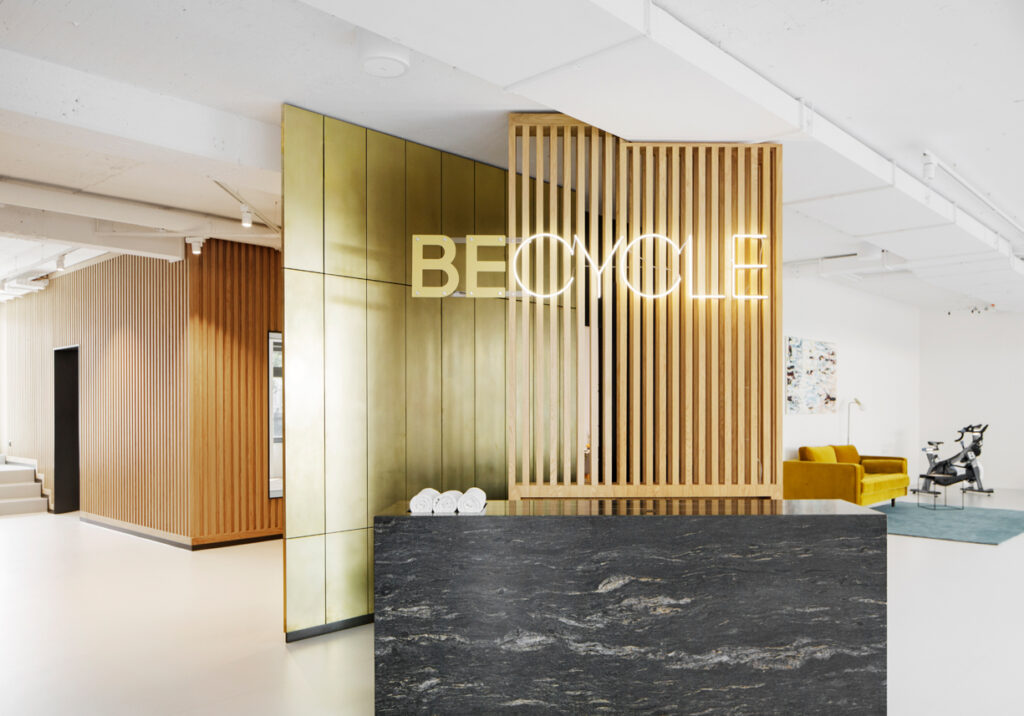
My sister-in-law, who lives in Düsseldorf, was a huge fan of our concept and asked me to dinner to propose that she set up a BECYCLE club there. I was delighted, because successfully expanding a business like this is hard. It’s a passion project and highly dependent on the people running it: it’s not something you can easily franchise. You need the personal connection of an owner who also runs the business and is there every day.
“I see more opportunities in Berlin: we’re in the east and haven’t yet tapped the many opportunities in the west.”
We found a space in Düsseldorf and created a beautiful club. It’s bigger than the first – we were doing well and wanted to expand – with four studios to offer Ride (cycling), Reformer (reformer pilates), Refine (barre, mat pilates, HIIT and yoga) and personal training.
And then along came the pandemic. In the end, the club opened in July 2020 – after the first, shorter phase of lockdown – so it had a really tough start. The government was great with all the support it provided during lockdown, but as soon as things opened up again, that support stopped. Yet people were still hesitant to come to class. So that was actually the toughest time: 2021, when we’d fully re-opened, and into 2022.
In fact, I can only safely say that we bounced back in January this year – 2023. And even now it’s not easy. We’re definitely still not where we were before COVID.
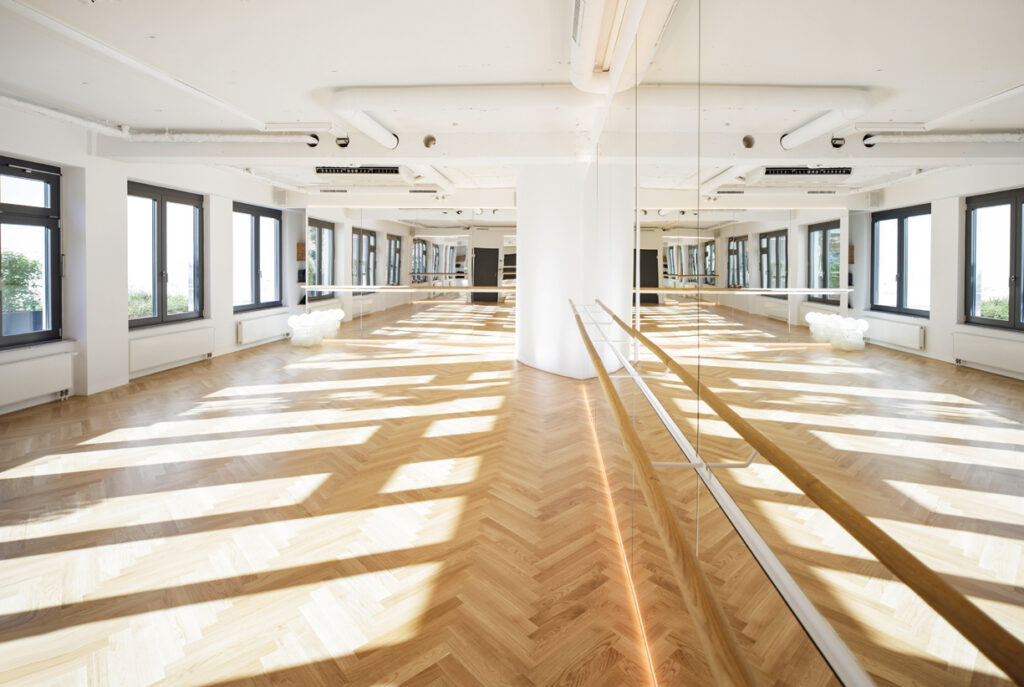
Tell us about club #3.
Club number three is back in Berlin, in an area of the city called Kreuzberg, but this time it operates under the BEYOND brand as there’s no cycling at this club at all – just reformer pilates, barre, HIIT and yoga.
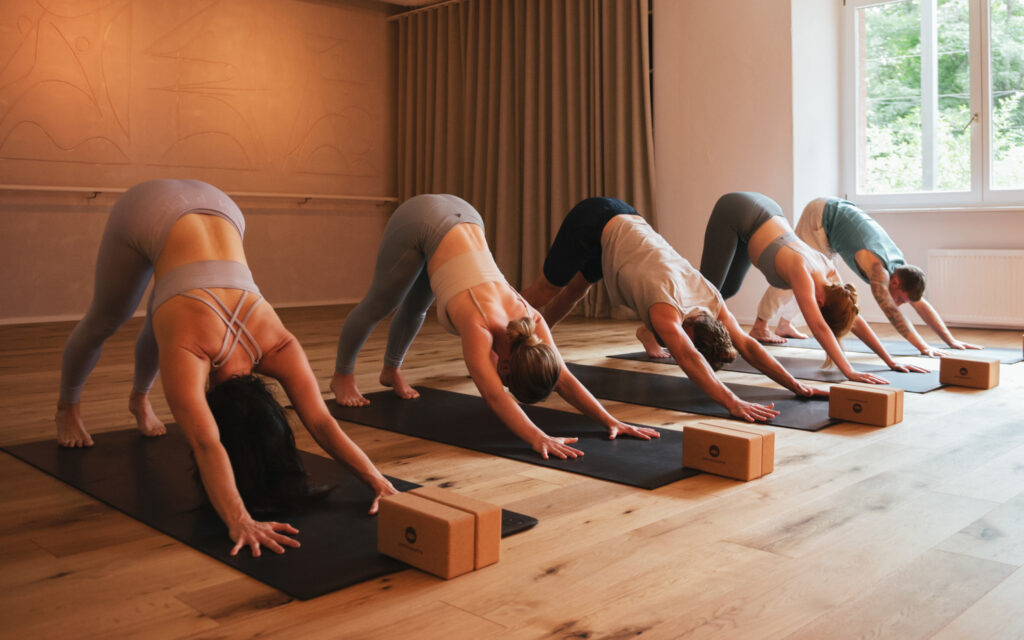
I’ve become very interested in the reformer pilates trend and how it’s moving in a group fitness direction, set to music and at times featuring some more cardio-focused movements, but still staying true to pilates. And it’s going really well for us, to the point that we’ll probably make reformer pilates our primary focus now, at least in cities where we already have a club that offers cycling; new cities will still have cycling in the mix.
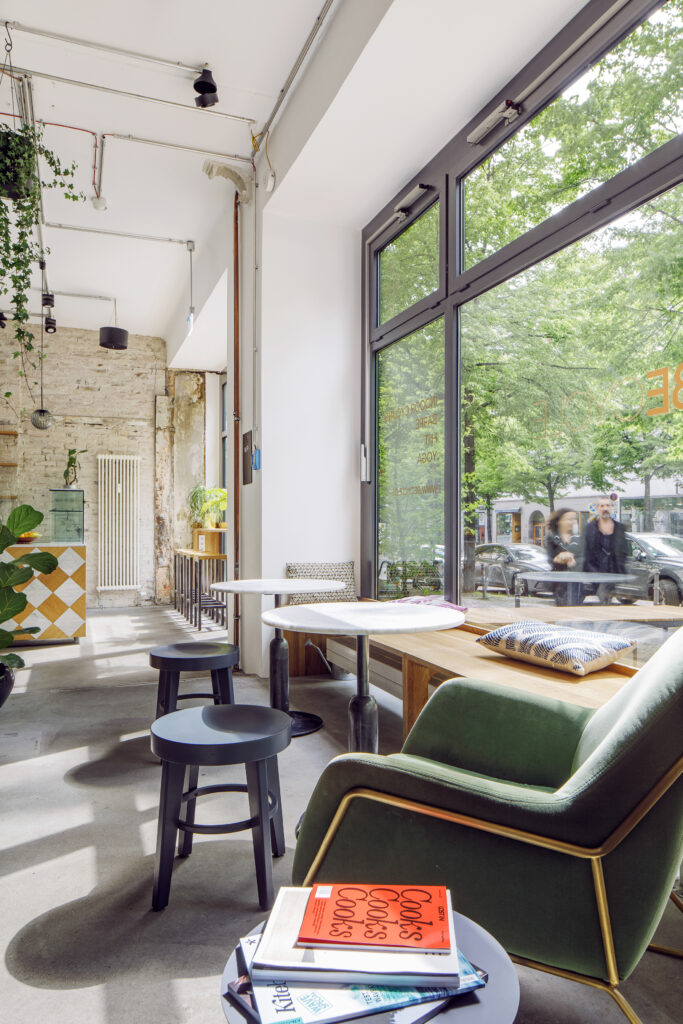
Because creating cycling studios is very expensive: you need to build soundproofed rooms, ideally with theatre-style tiers, and install lots of specialist lighting. There are no such specifications for reformers: you can build multi-purpose rooms and put whatever you want in there.
I also really like the fact that reformer pilates appeals as you age. The way we do cycling, with loud music in a dark box… when you get to 50 or 60 or 70, that isn’t necessarily what you want. Given our members in Berlin are typically aged between 30 and 50 already, and only slightly younger in Düsseldorf, we do have to think about that.
The next challenge will be to find older instructors: at the moment, they’re pretty much all in their 20s and 30s. I find that a shame: I’m inspired by older people who are fit and looking after their health, but older instructors are very hard to find. I don’t actually think there are any in Berlin!
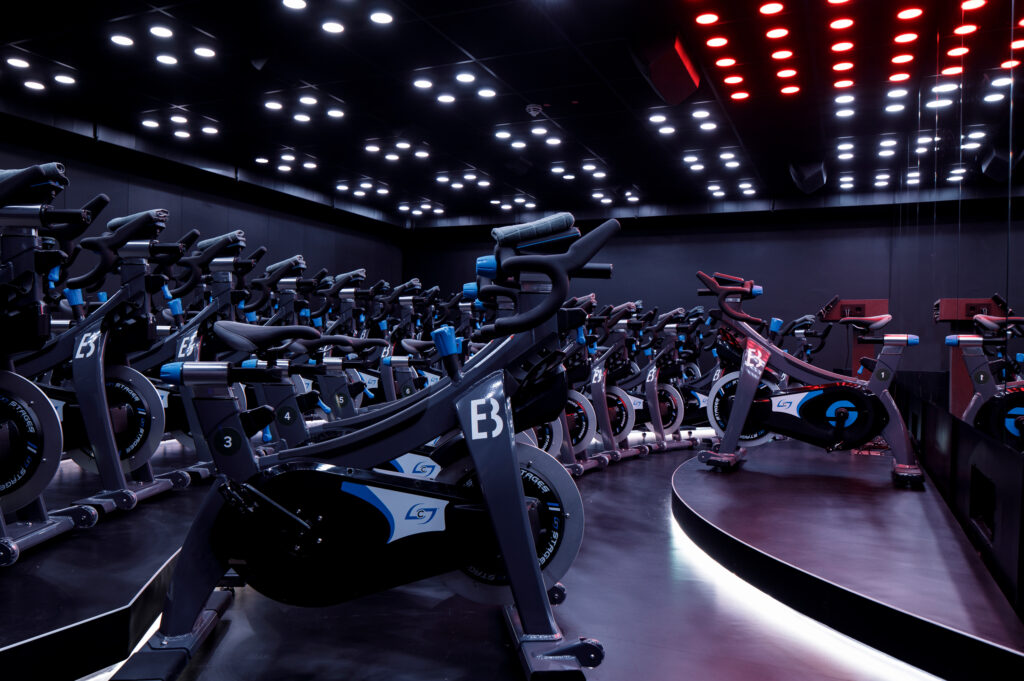
What are your growth plans?
We’ll grow further in Berlin, where we should have taken a cluster approach from the outset. With the market not yet saturated, people are still willing to travel for the experiences they want, and by creating different offerings across our two clubs, they’ve cannibalised each other a bit.
But I do see more opportunities in Berlin, which remains quite a divided city in many ways: we’re in the east and haven’t yet tapped the many opportunities in the west. In fact, there’s another location we’re in discussions on at the moment, which if it goes ahead I hope to open in September.
And I definitely think there’s space for a couple more clubs in Berlin, but this time we’ll cluster. For example, we already have our club in Berlin Mitte, but there’s no reformer pilates there at the moment, so that’s an opportunity.
“The secret is continuing to have fun. We all need to do something we really enjoy, because life is very short.”
I’m also not fixed on any specific modalities: I’m always open to exploring what else is out there, adapting to new trends and interests, and I think we’ll always have at least two rooms to offer a variety of experiences.
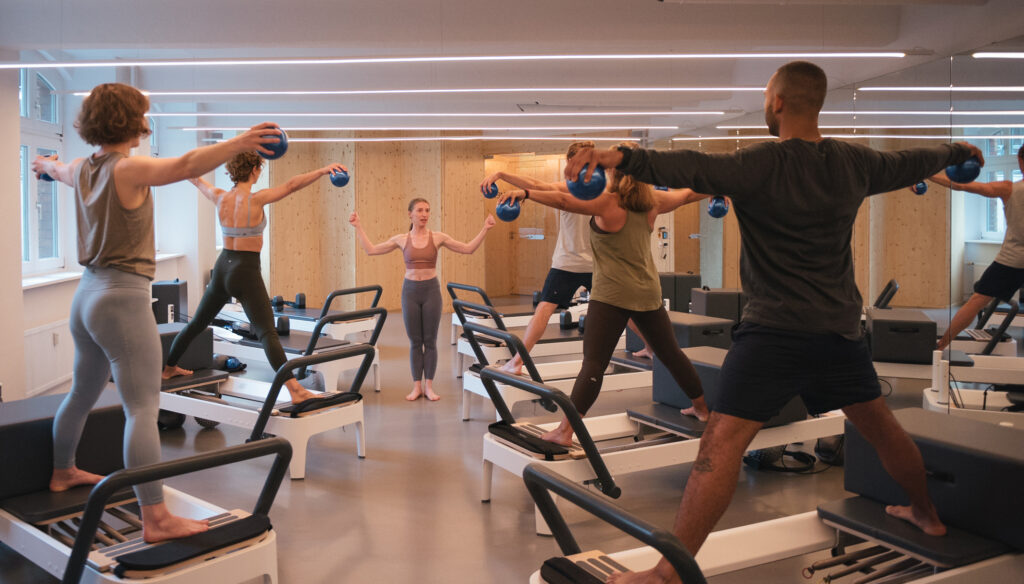
Meanwhile, we’re doing well in Düsseldorf. The club is growing every month and it’s a good, affluent city to be in. I’m pleased to be there. But it’s also a smaller city than Berlin, so we’ll stick with one big club and potentially look at other smaller studios in the future.
At some point we might also consider southern Germany, and because my husband and I love Lisbon, potentially Portugal if we can find the right partner: someone who’s willing to invest themselves and have skin in the game.
So there’s a lot we could do. But with life so uncertain at the moment – not only with the situation in Ukraine, but with rising costs too – we have to be a bit careful. Our costs are up 20 per cent, but we haven’t passed that stress on to our members.
What’s the secret of your success?
The secret, I believe, is continuing to have fun. My husband works in start-ups and it’s all about profits and planning exits, but that’s not what I want my life to be.
I think we all need to do something we really enjoy, because life is very short. This is my passion business. I do it because I personally love to take classes every day. I love coming into the studio. I enjoy connecting with customers when I take my turn on the front desk.
And that’s so important. If you lose the connection with your customers, you won’t know what’s going on and you won’t be able to keep improving your services.
My view: if you’re in this business and you don’t feel a passion, it’s probably time for you to be doing something else.
CYCED
What’s the story behind CYCED?
We opened on 1 January 2023 in Austin, Texas, in a residential suburb called Bee Cave. The initial momentum came from my husband Ali, who’s very entrepreneurial: in spite of opening our own dental practice in 2018, and since extending it too, by 2021 he was already itching to open a new business.
He threw lots of ideas at me, but with the dental practice and having two young boys, I just didn’t have the bandwidth. That was, until he suggested opening a cycling studio.
I first got into indoor cycling in 2016, right after my dad died, and I feel like it truly brought me out of those dark times. I would cycle four, five times a week, then began to teach at a local gym. So when Ali suggested a cycling studio, all of a sudden my mindset changed. That was something I could get onboard with!
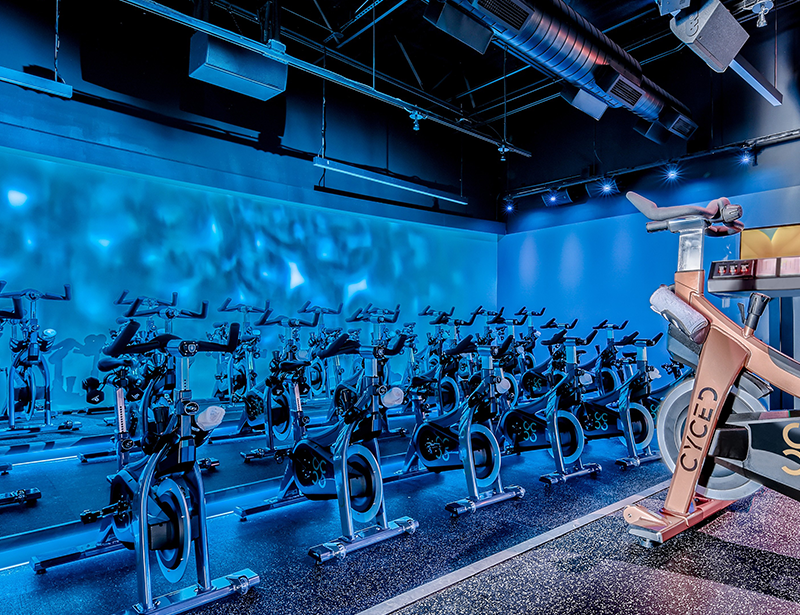
What was your vision?
We wanted to create something that was good for the community. I’d had a heartbreaking experience with the first studio I started at in 2016: as soon as I began to teach elsewhere, they banned me from cycling with them. When we decided to open our own studio, our first principle was reciprocity.
West Austin, including Bee Cave, is growing fast enough to support many different modalities of fitness. Even within cycling… CycleBar also opened here in January, for example, a few miles from our studio. And that’s fine: there’s plenty of opportunity and everyone has their own style. We don’t have to make ours a closed community; we encourage our instructors to ride and train elsewhere as well.
“Everyone is welcome, we ride as one, but it’s totally fine to be in the back row. We all started there!”
Design-wise, I love interior design and had visions of creating somewhere that wasn’t like a gym. I wanted to give CYCED a real boutique feel, and working with Barbara Chancey Design Group, we’ve created a luxurious colour scheme of navy and copper. It’s beautiful and homely at the same time.
We have a three-tiered studio with 36 bikes plus one adaptive bike. We have a great retail area where we sell our own CYCED merchandise, as well as NUX and Beach Riot. We have beautiful copper lockers, two bathrooms and a shower room with everything you need – a blow-dry bar and so on.
There’s also a social gathering space for before and after class, with Theraguns that you can use for free. We’ve done a few private rides since we’ve opened, allowing friends and family to experience the joy together, and we’ve hosted little happy hours in that space afterwards.
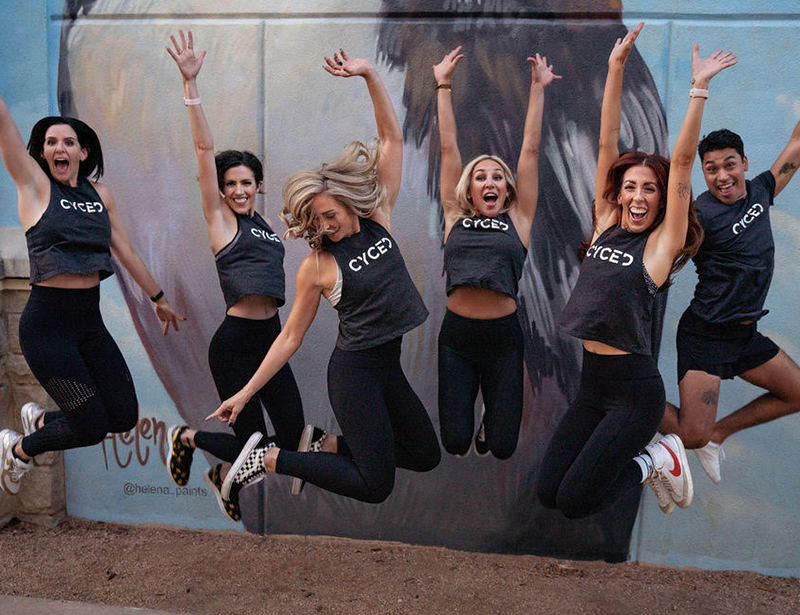
What’s your style of cycling?
We’re 100 per cent rhythm-based. We dance to the beat of the music and if you’ve never done it before, you keep coming back until you get the hang of it! We don’t offer beginner classes, but equally it’s OK not to be perfect. There are no metrics and no sense of competition at CYCED. If you can’t do the moves, that’s OK – just do what you’re comfortable with. Your body, your ride.
“No-one is better than anyone else. We train together, we ride together, we support each other.”
In fact, there’s a big slogan on one of our doors that says ‘Passion, not perfection’. I feel like that’s really the motto of CYCED. We genuinely couldn’t care less about perfection in class. We want you to grow with us and get better along the way, but as long as you’re doing something passionately, that’s all that matters. Our goal is to create a community where everyone is welcome, where we ride as one, but where it’s totally fine to be in the back row. We all started there!
Each instructor brings their own style and playlist but works within our BPM-based class structure. That always includes an arms track, a stretch track at the end and a climb where we turn the lights right down, the music is slow and it’s all about getting in touch with your feelings.
There’s no choreography in this climb. It’s a moment to reflect, to think about why you’re here and your journey to this point, and to have gratitude. We also remind participants that even on their darkest days, just as on their happiest days, we’ll be here: the CYCED family will always be there to lift them up, no matter what they’re going through. I’m not alone in crying fairly regularly during this track!
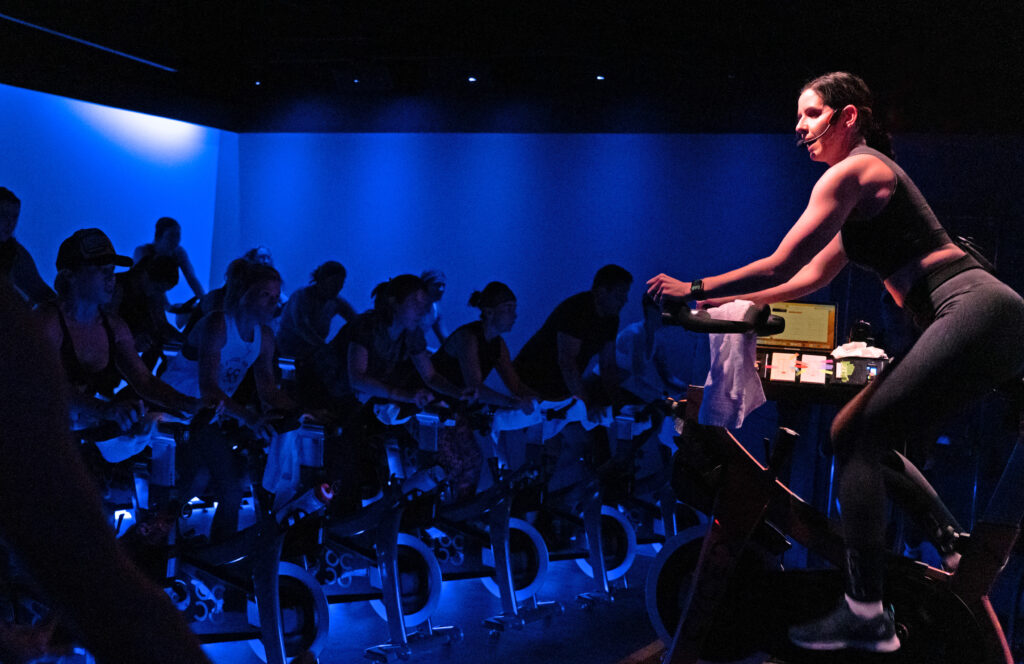
Tell us about your adaptive bike.
It wasn’t part of our original concept, but then a girl who used to ride with me at the other gym – a girl named Sarah – was diagnosed with ALS. She used to ride all the time, so her decline over the last couple of years has been very challenging: she’s in a wheelchair now.
Last year, she reached out to me to say how much she missed just being in the environment of the studio, and would we consider getting a recumbent bike so she could just sit in there and experience it. I really wanted to do that for her. She won’t be able to do the moves, of course. She may be able to roll her legs. But even if she can’t, she can wheel herself in and just experience the music, the sound, the passion in the room.
“It isn’t just about getting disabled people in to ride. It’s about truly giving back to those in need.”
We managed to find a recumbent bike with a small enough footprint to sit alongside our studio bikes: I didn’t want Sarah, or anyone else, to have to go into a separate area of the studio. Going back to our community principle, we want what we do to be for everyone, no matter your limitations.
And our whole studio is geared up for this; in Bee Cave, every business has to be fully compliant with American Disability Act regulations. Our showers are wheelchair-accessible, the doors are wide enough, the countertops low enough and so on. We want as many people as possible to find joy in the CYCED experience.
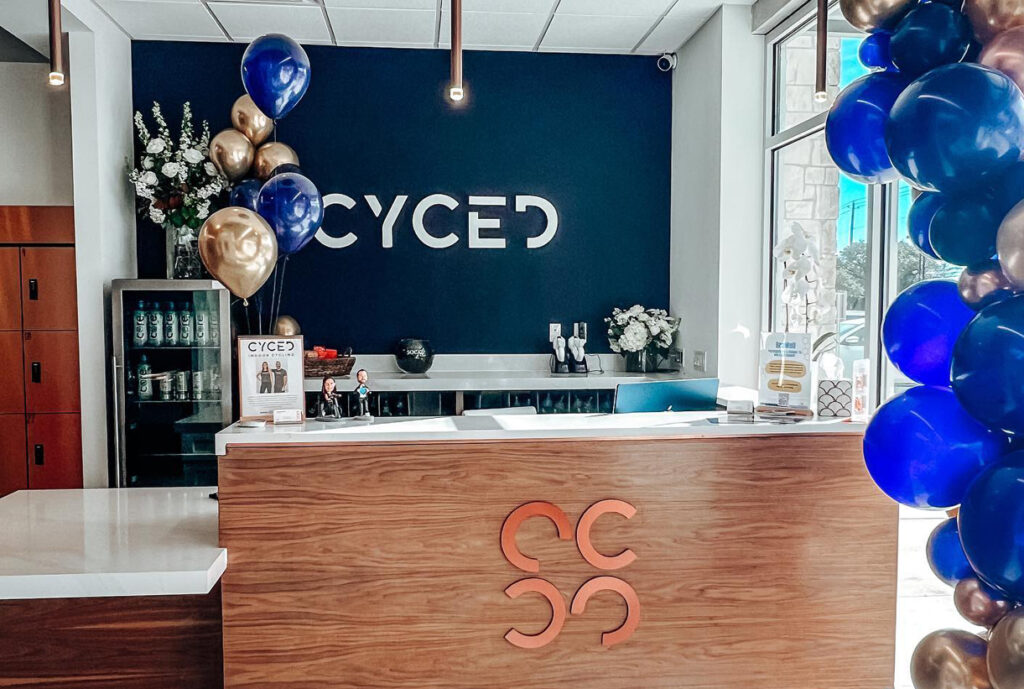
Sarah has had a challenging last few months, so she hasn’t been able to ride with us yet; we haven’t had anyone use that bike yet. But actually, it isn’t just about getting disabled people in to ride at CYCED. It’s more about truly giving back to those in need and helping people along the way, so we hope charity rides will be a big thing in our future.
We’ll do rides for ALS, of course, but also for other non-profits. At our dental practice, we have patients whose two daughters have cystic fibrosis. By the time this magazine comes out, we will have hosted our first charity ride on 1 May, with 100 per cent of the proceeds going to the Cystic Fibrosis Foundation.
I also make a point in class to encourage riders to find a moment of gratitude for their bodies. There are so many people who wish they could do the things we often take for granted, but aren’t able.
Tell us about your instructors.
There are five of us, including me, in our founding team. It’s all women at the moment, but we are auditioning for more instructors. That’s something we’ll do quarterly even if we don’t actively need anyone: if we want to be the best and if we want to grow, we never want to miss out on talent.
One really important thing at CYCED is that we’re a team. I’ve always been very clear with our instructors that no-one is better than anyone else. I don’t care if your numbers are better. We train together, we ride together, we support each other.
That comes across in class, too. We avoid using the word “I” and we’re very careful to ensure it isn’t all about the superstar instructor. It’s “we’re so glad you’re here” and “we’re going to do this together”. We are CYCED. Everything is “we”.
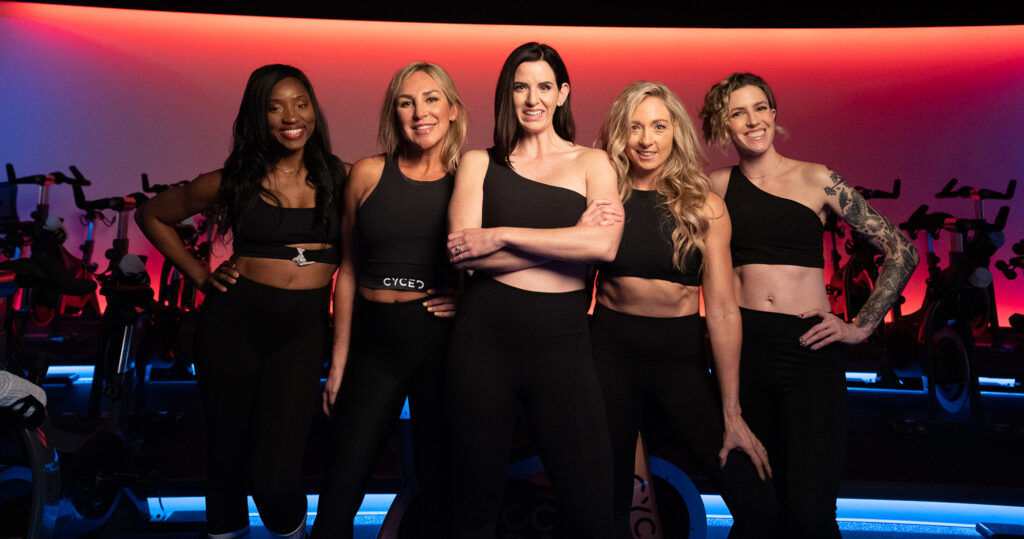
How is CYCED doing so far?
We’ve been open four months now (interview conducted 4 April 23) and we’re incredibly fortunate to be in a community that really supports local businesses. CYCED is already more successful than we could ever have dreamed.
Classes aren’t all full yet – although some are –but word is spreading and bringing new people in every day. That’s the important thing right now. Attendance across our 16 weekly classes is growing all the time through word-of-mouth and social media.
Obviously the dream is to fill every class, and we’ll keep evolving so the product never gets stale. It will always be cycling, though. And crucially, along the way, we’ll really take care of our clients. At CYCED, you’re more than just a number.
“The dream is to fill every class, but along the way, we’ll really take care of our clients. At CYCED, you’re more than just a number.”
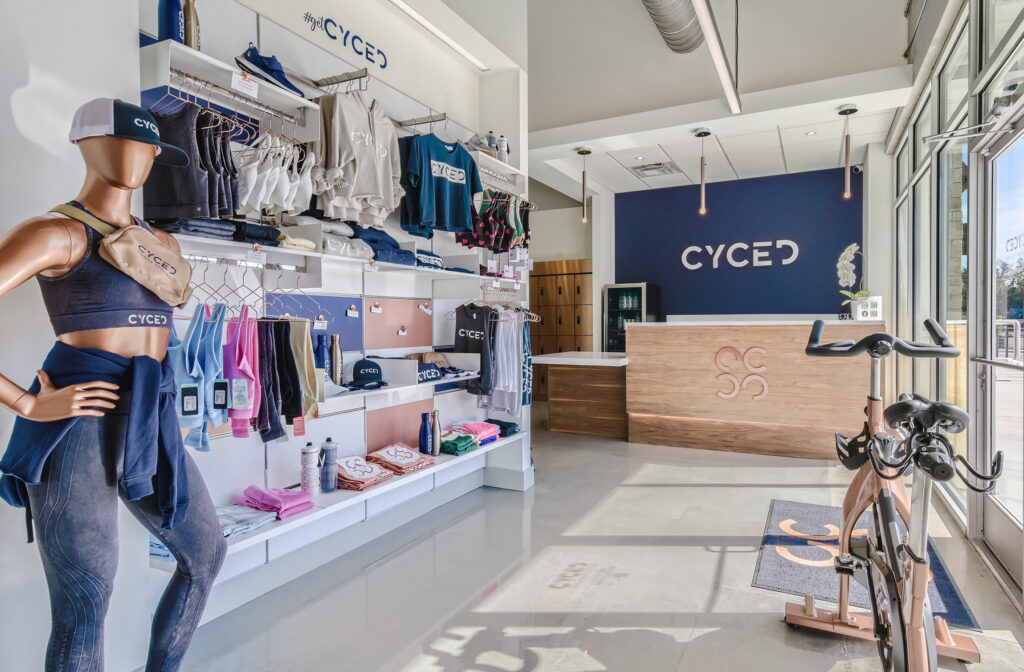
Fuelled by community
What’s the Fuel Cycling back story?
MK: Margarett and I both used to instruct at another studio, but we felt something was missing. We made the decision to leave and create our own welcoming, community-focused space.
We started out as an online platform during COVID, with really loyal followers from our previous club who followed us online and got their friends involved too. And then, as we were coming out of the pandemic, a member of our community told us about a space that was available to rent.
And that was that. We opened Fuel Cycling in Monterey, California, on 12 August 2021. At the time we had 20 bikes in our studio – what we affectionately call The Tank – with a warehouse-meets-speakeasy vibe where we have everything you need, without the frills you don’t.
Honestly, I had never planned to own a studio. I’m a full-time teacher and that was all I ever intended to be. But we had a community who wanted to ride with their favourite instructors and we just felt we had to make it happen.
I knew I couldn’t do it on my own, but together with Margarett, our fantastic manager Lindsey and our girl gang of amazing instructors – five of us from our old club – we did it. Crucially, we’ve also done it with the help of our community.
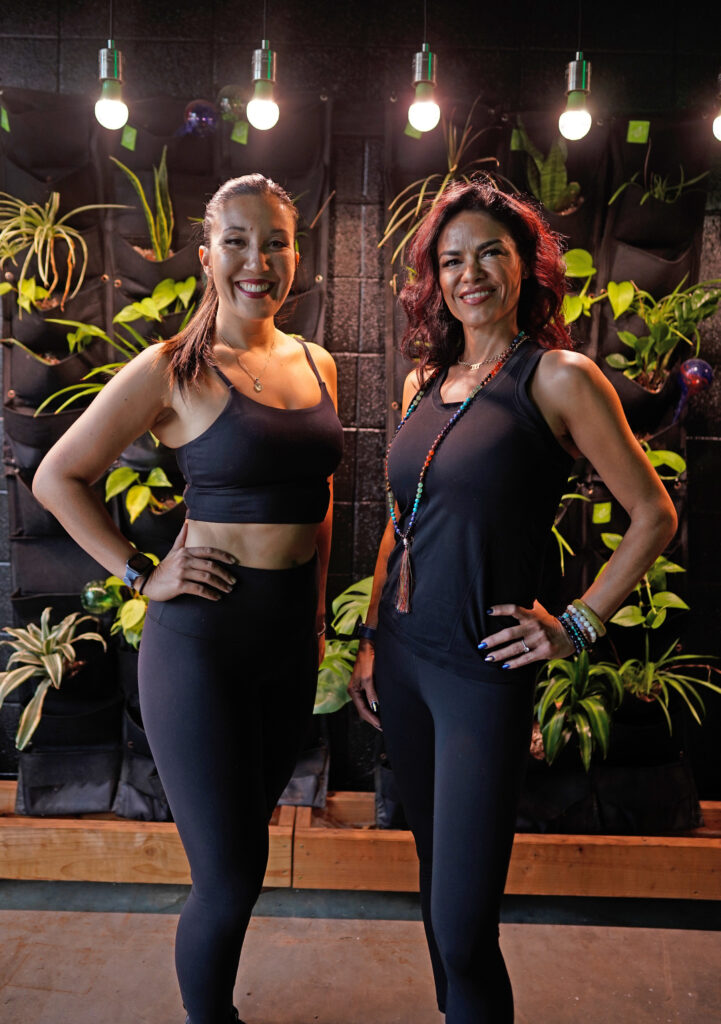
Can you elaborate?
MK: When we started, we didn’t have much. Neither did we have it all buttoned down from day one. We were warned that we’d never be able to compete against the big franchises and the corporate studios, but we had five amazing instructors, a great manager and a ready-made community who told us that whatever we did, they’d come. So, we trusted our instincts and we went for it. Our thinking was pretty much: “We have bikes, we have speakers, we have music and we have our community. We’ll be fine!” And where many corporate studios have closed over the past year, we’ve grown and grown.
For the first few weeks, the only décor we had was a sign that said ‘It feels good to be home’, but together with our community, we’ve slowly added things over time. We now have a plant wall to which our members have brought their own plants. One weekend, 10 of us got together to paint all the walls black. When we needed mirrors, we put out feelers to see who could help. We’ve tweaked little details as the months have gone by and we’ve done it together as a community.
We’re also next door to a CrossFit studio and we get great support from them. We operate independently, but we’re there to help each other.
One of my big learnings in creating Fuel Cycling has been knowing what my limits are and how to ask for help. Over the past year, we’ve made connections across our local community – far beyond our original group – as people have come forward to support and help us.
“We didn’t start a cycle studio and then try to build a community. We’re a community that built a cycle studio”
How is your community so strong?
MG: As our manager Lindsey puts it, we didn’t start a cycle studio and then try to build a community. We’re a community that built a cycle studio.
We do nurture this, of course. We’re there at local events, competing in trivia competitions as Fuel, raising money and making donations to charity, doing beach clean-ups and so on. We also have our own social events, such as our popular Pumpkins & Pinot ride.
But the point is, we were a community before we were a studio and that shows. When new people come to Fuel, it isn’t only our team who welcome them as if into their own home. Our members do the same. They go over and talk to them as if they’ve known them for years and even help them set up. People spend time in our community and just want to be part of it.
Fuel Cycling is where friendships are born and it’s such an honour to be that space. Everyone is there for each other, to the point that members will schedule visits around celebrating milestone rides with their friends, for example, or to be there if someone is coming back for their first ride after an illness. They don’t work out just to work out. They work out to see their friends. If they can’t make the ride, they’ll come to the social afterwards.
Our riders and our staff see Fuel Cycling as their studio, and rightly so. They were there when we started. They’ve grown with us and helped us when we needed help. They’ve come to class and they’ve introduced their friends. They drive our sense of community.
Our rides are great, but it’s the people who really make us.
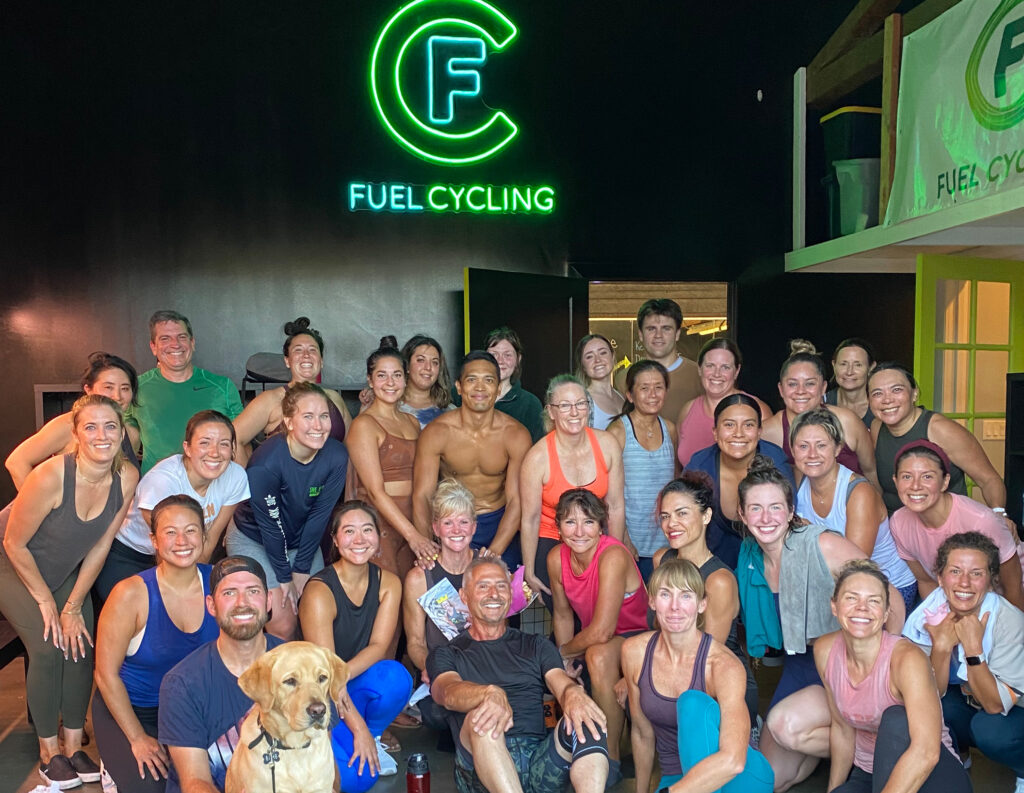
What about community beyond the studio?
MK: We saw something really interesting coming out of the pandemic: lots of new local businesses being set up by people – and especially women – who had been inspired to finally do the thing they’d always dreamed of doing.
We spent a lot of time going out to meet them, walking the streets and visiting all the coffee houses, the farmers’ markets, the little artisan shops to see how we could help them. Now, every month, we showcase a local business on our social media and we have a Makers’ Market in our studio: a cabinet where local makers and merchants can showcase their products, from jewellery to home-made soap to CBD tinctures.
It isn’t even about trying to get them to join our studio. It’s important to us that we’re part of our local community.
“It’s challenging in The Tank, but also hugely encouraging. There aren’t many places I feel as strong as I do when I’m in that room”
Tell us about your programming.
MG: Fuel45 – our 45-minute cycling class – makes up most of our schedule. We used to do Fuel60 once a week, too, but our community wasn’t quite ready for 60 minutes back then; we may reintroduce it at some point if there’s demand for it.
Alongside this are regular special classes: everything from musical themes to our Cookie Exchange ride, where everyone bakes cookies and you all swap them so you go away with one of each. We do a bingo challenge too, where you tick a box each time you ride a different bike. It gets people out of their back row comfort zones and shows them they can do it.
All our classes are rhythm rides. The lights go down and it’s like dancing on a bike. We do make the rides challenging, but it’s all done in such a fun way that people get lost in the moment and don’t realise how hard they’re working.
Our instructors get off the bike and dance around, they motivate you and remind you what you’re capable of; there’s no focus on what you can’t do. The riders cheer each other on, too. It’s challenging in The Tank, but also hugely encouraging. There aren’t many places I feel as strong as I do when I’m in that room.
MK: In terms of the programming itself, we’re fortunate to have five amazing instructors, all of whom were itching to get away from the whole corporate ‘this is the recipe’ approach. All our classes have to include a variety of rhythms, and must be adaptable to both newcomers and regulars, but other than that we leave it to our instructors to do what feels right for them.
That includes the playlist, which shouldn’t just be chosen for a good workout. It should also reflect the instructor and what’s going on with them that day. Say I feel like I need a mental boost. I’ll start with that and I’ll pick tunes and design my programme around it.
For us, music isn’t just music. It’s a soundtrack that people should get something out of at an emotional level.
“We’ve had people tell us coming to Fuel is like going to church, because we say everything they need to hear!”
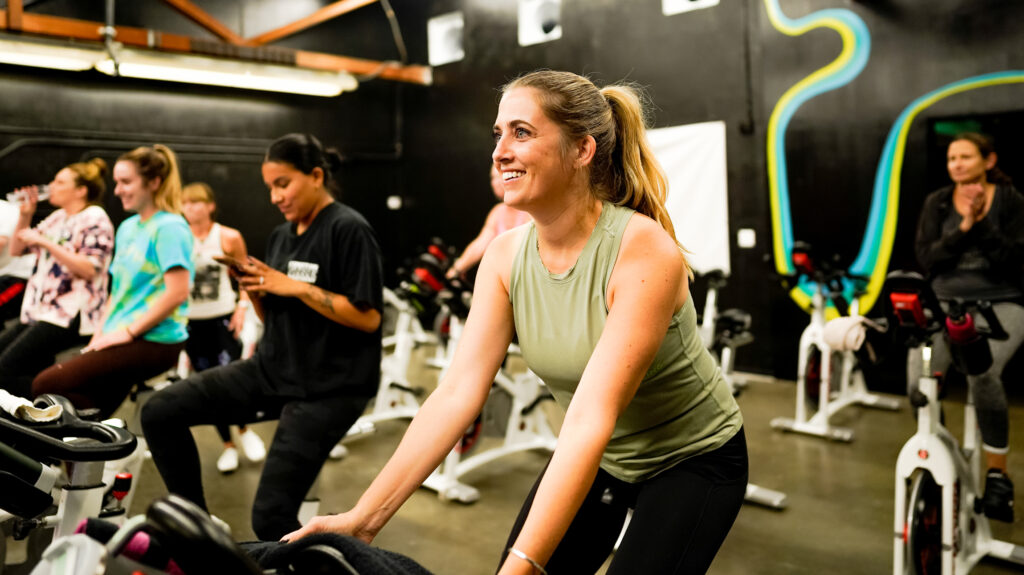
How do you train your instructors?
MG: It’s a collaborative and ongoing process. We know it’s in all our interests – and those of the studio – for everyone’s classes to be full, so we aren’t competitive with each other. We do each others’ classes as part of this; it’s fine for us all to have a different flavour, but we can still learn from each other. Nobody knows everything.
New instructors also co-teach with established instructors until everyone feels they’re ready, and we all bring something – different skills and strengths – to help them in their training.
MK: The way we connect with our members is also very inclusive: our team knows it’s always ‘we’, never ‘you’ or ‘I’. Everything we do, we do it together with our community.
We also ask our instructors to open their hearts and their lives, because inevitably there will be people in class for whom it resonates: their experiences and feelings, hopes and fears. In fact, we’ve had people tell us coming to Fuel is like going to church, because we say everything they need to hear!
MG: Crucially, though, being in the saddle doesn’t make it The Margarett Show, and the same goes for all our team. A lot of studios showcase their instructors, but that can be intimidating for riders. At Fuel, it isn’t about what the instructor can do. It’s about making every class accessible, challenging everyone in the room to exactly the right level and doing what we do together.
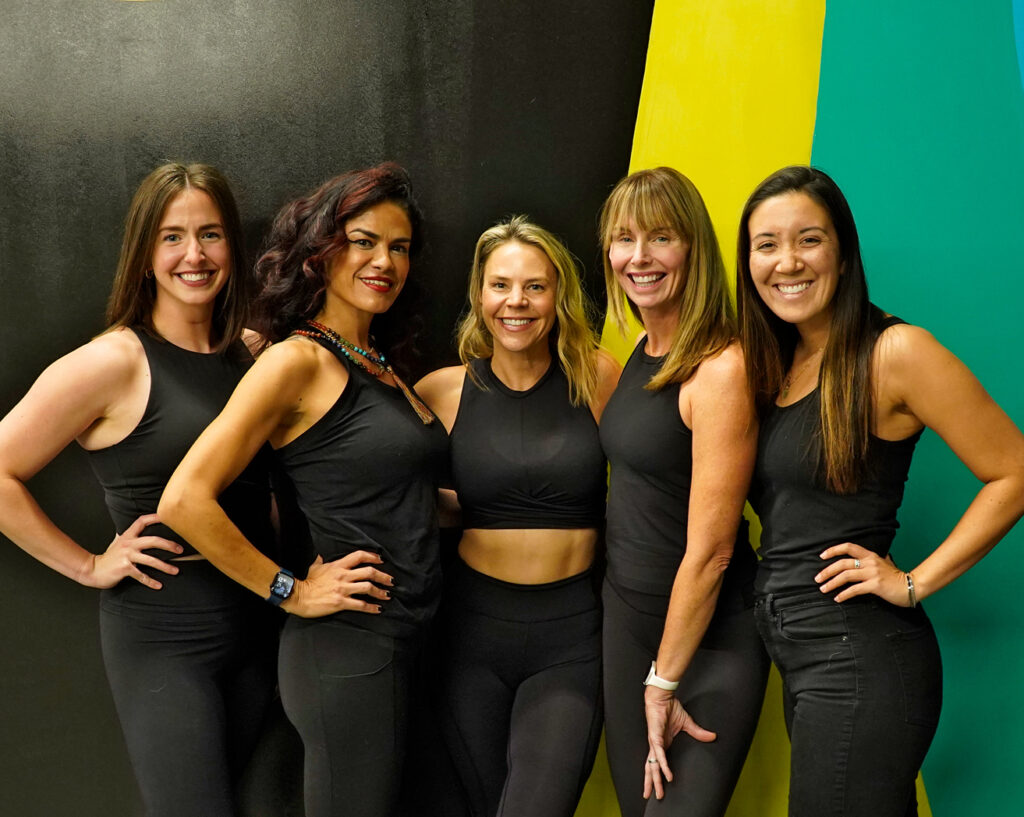
Is being women-owned important?
MG: We didn’t intentionally set out to be a women-only team and we’re very open to employing male instructors. However, we are women-owned – and also minority-owned – and I think that matters for a lot of reasons.
At the age of 45, I became a widow with five children. There was a real moment of doubt, of wondering how I would move forward. Could I do it? Was I strong enough? How would I provide for my children? Purely at a personal level, creating Fuel Cycling… it was so important for me to show my children that their mum was strong. That I could do it.
And then there’s Molly: a full-time teacher who was also studying for her special education credential at the exact same time we were launching Fuel. I think it’s so important for our community, and other women in particular, to see that.
Fuel is part of a wave of new, women-owned businesses that have come out of COVID and it’s been really humbling to be a part of that, working to see how we can lift each other up.
MK: The funny thing is, though, that we hadn’t really thought about all this when we set out to create Fuel Cycling. We did what we did because we felt we had to for our community, and my boyfriend really spurred me on to do it.
It was only afterwards, when people saw what we’d done and talked to us about it, that we realised what it meant to them, to the community, to women. So often, women are told ‘no’ – especially minority women. Fuel Cycling is proof that you don’t have to look a certain way to accomplish what you want. Certainly this year, International Women’s Day felt very different for me, when I was up there on the bike and using our studio to prove that dreams can become reality.
“We haven’t done it the easy way. We’ve done it in a really meaningful way – a way that matters to us and our community”
How are people responding to you?
MK: I think post-COVID, people are very aware of who they’re supporting and where they’re spending their money. People come into our studio and they love the ride, but even more than that, they want us to be successful. They see the love our studio has been built on, and that we continue to pour into the community, and they want to support us.
MG: I think it’s also true that people see themselves represented at Fuel Cycling. Ours is a very diverse crowd: gender, colour of skin, ages, backgrounds. We have military wives. We have grandmothers. And although 70–80 per cent of our members are women, we have men. Intimidated at first by all the women, they quickly get hooked into the community and bring their friends too, so the number of male members is growing.
We very much represent the community. Everybody has a seat at Fuel Cycling.
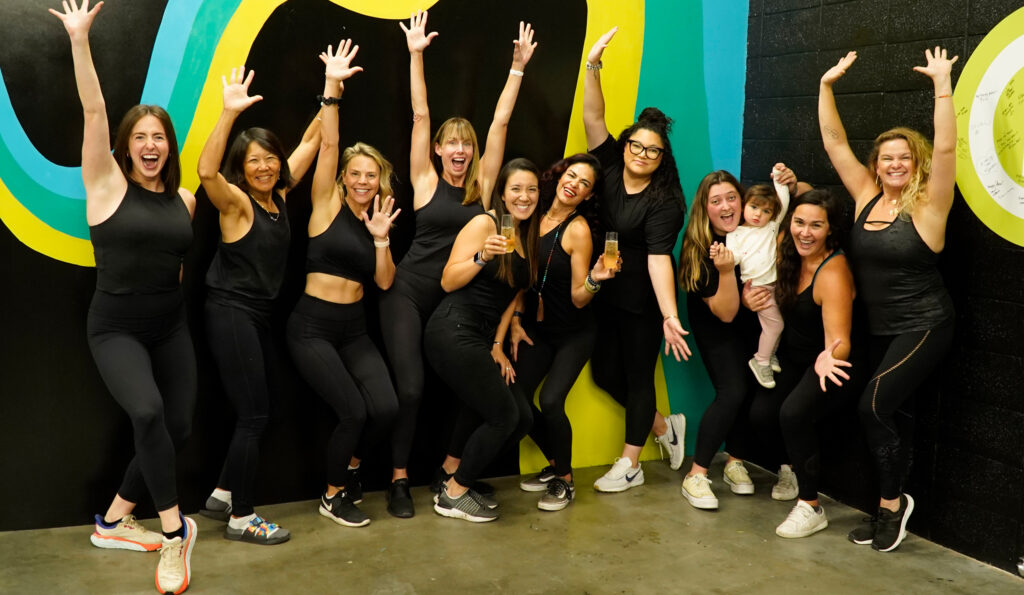
What are you most proud of?
MG: We’re a community that’s built a studio and the feedback is incredible. People say it’s like Cheers, because everyone knows your name! They say you walk in a stranger and leave a friend. Hearing things like that, it makes me really proud of what we’ve created.
We haven’t done it the easy way, either. We’ve done it in a really meaningful way – a way that matters to us and our community. I think that’s really important.
I’m also incredibly proud of the fact that, just 11 months after opening, we won Best Boutique Fitness Studio in the Best of Monterey 2022 awards. The names we were shortlisted alongside, I felt honoured even to be considered, but we won! It’s meant such a lot to our whole community.
MK: What I’m most proud of is seeing how lives have been changed by being part of our Fuel Cycling community. I always get really emotional when I see people celebrating a milestone, making friends, doing something they’ve never done before – standing up in the pedals during a ride, for example, or coming to class in new gym-wear and feeling great about themselves. I always wonder, would that have happened for them without Fuel Cycling? I’m just so proud of what we’ve all created together.
“A lot of studios showcase their instructors, but that can be intimidating for riders. At Fuel, it isn’t about what the instructor can do. It’s about what we can do together”
What are your plans moving forward?
MG: We may introduce a couple of new cycling concepts over the coming months. We’re fine-tuning what those might be, but ultimately it will be based on what our community is ready for.
MK: Beyond that, the sky’s the limit. We’ve already grown our membership to 70 and our studio to 35 bikes, but we’re just getting started.
We currently offer around 15 classes a week and could easily add more, as well as bringing in new instructors. That’s where we always look to spend our money – on top-quality staff – and we have plenty of space at our current site to grow.
Longer term, I have big dreams for Fuel Cycling. Five years from now, I’d love to be in larger premises where we have a second studio for complementary disciplines – yoga, stretching, barre and so on – as well as a juice bar. All our instructors are multi-disciplinary, so it’s just the extra studio space we’d need.
Would we ever open more locations? I don’t know – never say never. We could also go online again to make Fuel accessible to even more people. The most important thing, though, is that we built Fuel for this specific community. We will first build and grow here before we even consider going anywhere else.
cycling4cancer
I lost my mum to cancer in 2000, but the idea of cycling4cancer first came about in 2013 when a friend of mine – TV sports journalist Morten Ankerdal – approached me about a fundraiser when his dad had cancer. I was an indoor cycling instructor then, but Morten thought he could beat me on the bike. We organised a three-hour indoor cycling event and I beat him big time!
As the loser, his challenge was to raise lots of money for cancer research, which he did along with his co-hosts of Knæk Cancer – a massive televised event in Denmark which raises money for cancer research every year, and which translates as ‘Crack Cancer’.
It gave me the idea for a much bigger 24-hour indoor cycling event, which would be part of Knæk Cancer each year. The first cycling4cancer event took place in 2014 and we’ve continued every year since then.
“The event is an overwhelmingly upbeat one, filled with positive vibes and happy memories of those we may have lost”
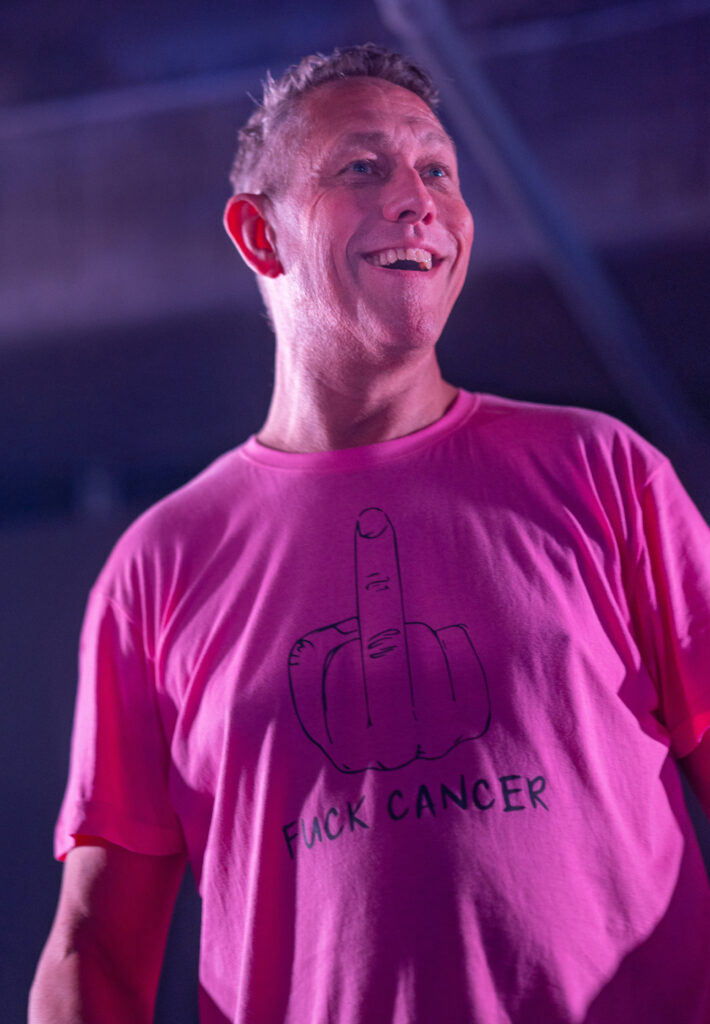
What’s the concept?
Cycling4cancer is a 24-hour indoor cycling event that finishes at 6.00pm on the Saturday of Knæk Cancer, while the TV coverage is ongoing. For 2022, that meant starting at 6.00pm on Friday 28 October and finishing at 6.00pm on 29 October.
It’s the ultimate corporate teamworking and networking event, with businesses paying for a bike – a minimum donation of DKK10,000 (around €1,350) that goes directly to Knæk Cancer – and asking their employees to ride it.
There are 24 sessions of 45–50 minutes each, with a short break in between while we change the instructor and DJ, and every bike must be ridden for the full 24 hours.
We’ve set DKK10,000 as the minimum donation because at this level, your company’s name comes up in the Knæk Cancer TV coverage. Some organisations donate more, though: in 2022 we had a bank pay DKK50,000 for one bike, while a plumbing firm took two bikes at DKK25,000 each. Other companies pay DKK10,000 but also donate DKK5–10 per kilometre cycled by their employees.
We do also have individuals who fund a bike themselves and put a team together to ride, often because they have a relative who’s sick or who they want to remember. These stories are very moving; I admit I find myself crying quite a lot throughout the 24 hours. However, the event is an overwhelmingly upbeat one, filled with positive vibes and happy memories of those we may have lost.
Finally, I have a couple of bikes where – if you really want to take part but can’t organise a team or afford a whole bike – you can ride for an hour for DKK500.
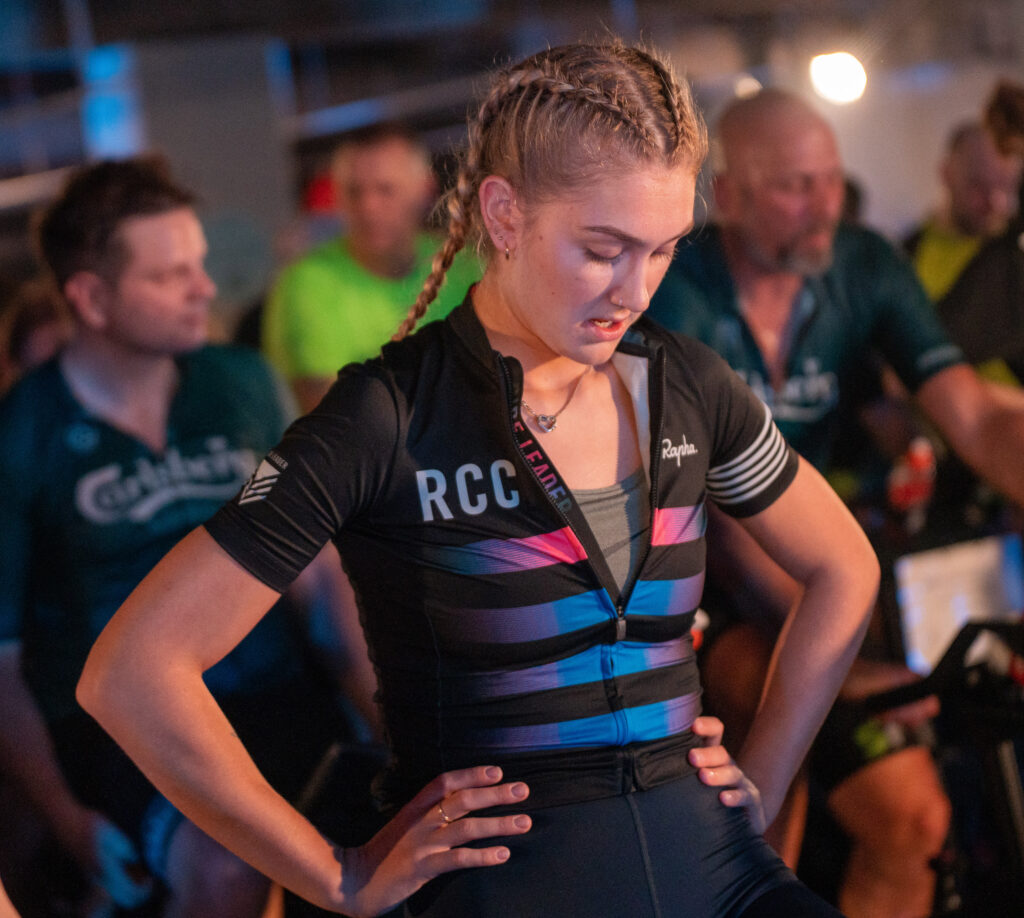
“Exercise and positivity keeps cancer at bay. I will do this again and again and again to keep raising money for cancer research”
Tell us about the 2022 event
It nearly didn’t happen, because my girlfriend was diagnosed with cancer in April and died in August. I honestly wasn’t sure I had the energy to do it. I also started to question the purpose of doing all this every year when my loved ones were still dying.
But then I reminded myself of my personal motto – that exercise and positivity keeps cancer at bay – and I decided this was no time for quitting. Cancer never sleeps, and I will do this again and again and again to keep raising money for cancer research.
And it was an incredible event, with 118 BODY BIKES provided by our sponsor Fitness Engros in action for the 24 hours. That’s 30 more than last year and there was a lot of love, happiness and sweat in the room!
People also brought family and friends to support them and enjoy the event: we had over 4,000 people in attendance.
We are hugely grateful to our 24 incredible instructors and our best-in-Denmark DJs who gave their time for free, and our sponsors who provided the bikes, the venue, the refreshments, the lighting and everything else we needed to put the event on. As always, the whole thing was done for free: not one bit of money passes through my hands.
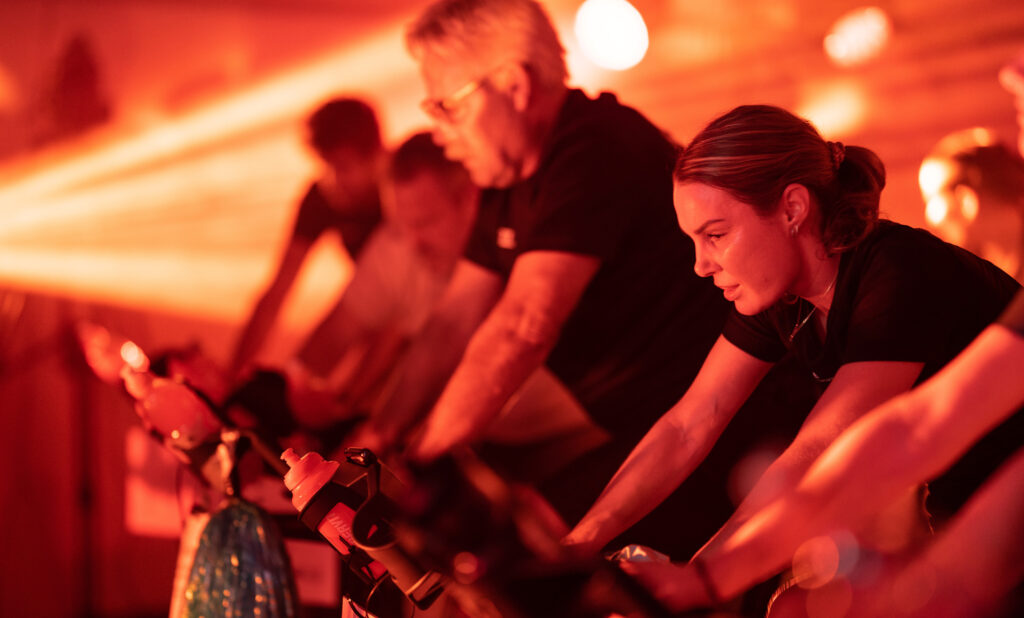
What’s your role on the day?
I used to be one of the instructors, but I now host and push to get fundraising as high as possible. Between each session, I get up on stage and ask everyone in the saddle to post on their social media and LinkedIn accounts asking for sponsorship before they start, and to post again afterwards to say how far they cycled.
I then kick every session off – calling out “Knæk!” from the stage, to which all the participants shout back “Cancer!” – before leaving it to the instructor and DJ to crank it up.
All sponsorship goes direct to Knæk Cancer using a dedicated MobilePay code, so funds are allocated to our event and we know how much we’ve raised.
And how much did you raise?
I had hoped to raise DKK3m in 2022 (a little over €400,000), but with the economic crisis hitting hard, we didn’t quite reach that target: the figure we announced on the day was DKK2.1m.
Money is still coming in, though; we’ve already passed DKK2.4m and, once the final bits of sponsorship are counted, I expect to hit DKK2.5m. I’m pleased with that. Knæk Cancer lowered its overall 2022 forecasts by 30 per cent and ended up bringing in DKK117m on the day, down from DKK150m in 2021. Meanwhile, cycling4cancer will have raised DKK2.5m compared to DKK2.6m in 2021. In spite of all the pressures in the world at the moment, our event continues to have great momentum.
Once we’ve added 2022’s fundraising to the DKK8.3m we raised between 2014 and 2021, our running total will hit DKK10.8m.
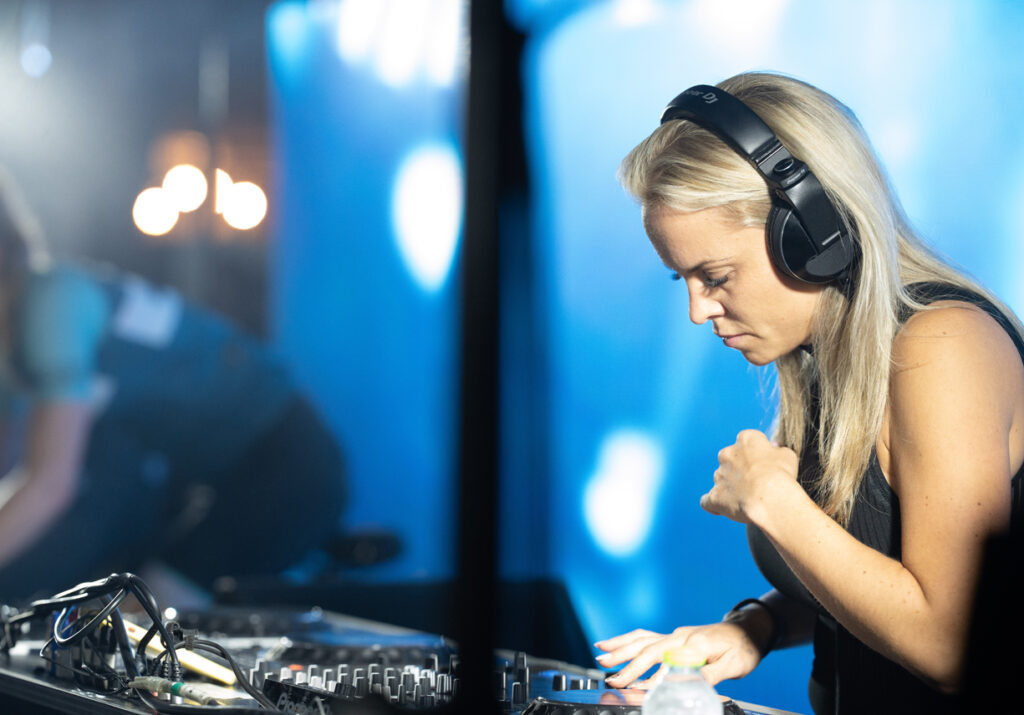
What comes next for you?
We’ll keep raising the bar with cycling4cancer and we’ll keep fighting.
At the moment, I organise just one event each year, although we do sell ‘f*ck cancer’ merchandise throughout the year. I do this alongside a full-time job and it’s all-consuming: finishing at 6.00pm on the Saturday, by the Sunday morning I was already thinking about next year’s event!
However, I would like to grow to at least two events a year – one in the spring and one in October – as well as potentially organising some pop-up events too. I want to keep driving awareness of my motto and belief that exercise and positivity can keep cancer at bay.
I’d also love to make this a global event, finding local organisers who can partner with me to host simultaneous events around the world, with all funds going to cancer research in those countries. I’d love us all to stick up our middle fingers and say together: ‘F*ck cancer’.
Reinventing indoor cycling
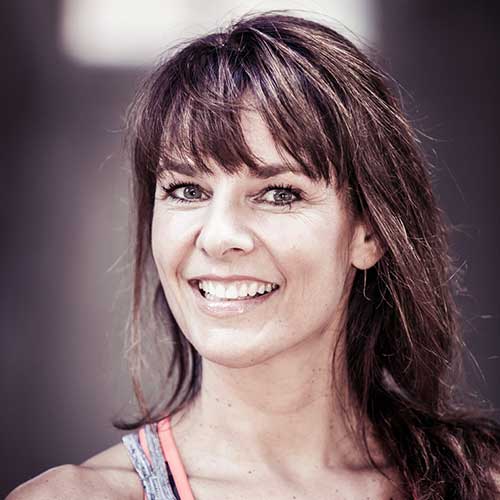
THE CREATOR
Renata Jarz
CEO, House of Workouts
”When Spinning started around 25 years ago, it was hugely popular and studios were packed,” says Renata Jarz, CEO of group exercise programming specialist House of Workouts. “But as the years have gone by it’s become skewed towards men, at least in mainstream clubs. It’s the same guys you see out on the roads, focusing on performance and metrics. It’s become a badge of honour to go as hard as possible in class.
“As the emphasis has moved in this direction, we’re seeing fewer new people coming in to the discipline. The boutiques are an exception – they’re doing well at attracting Gen Zs – but elsewhere, indoor cycling has become a love-or-hate class with the same regulars all the time. And those regulars are getting older. Younger people just aren’t gravitating towards it.
“If we want indoor cycling to thrive across the whole sector in the future, we have to do something to attract younger riders now. We need a new approach.”
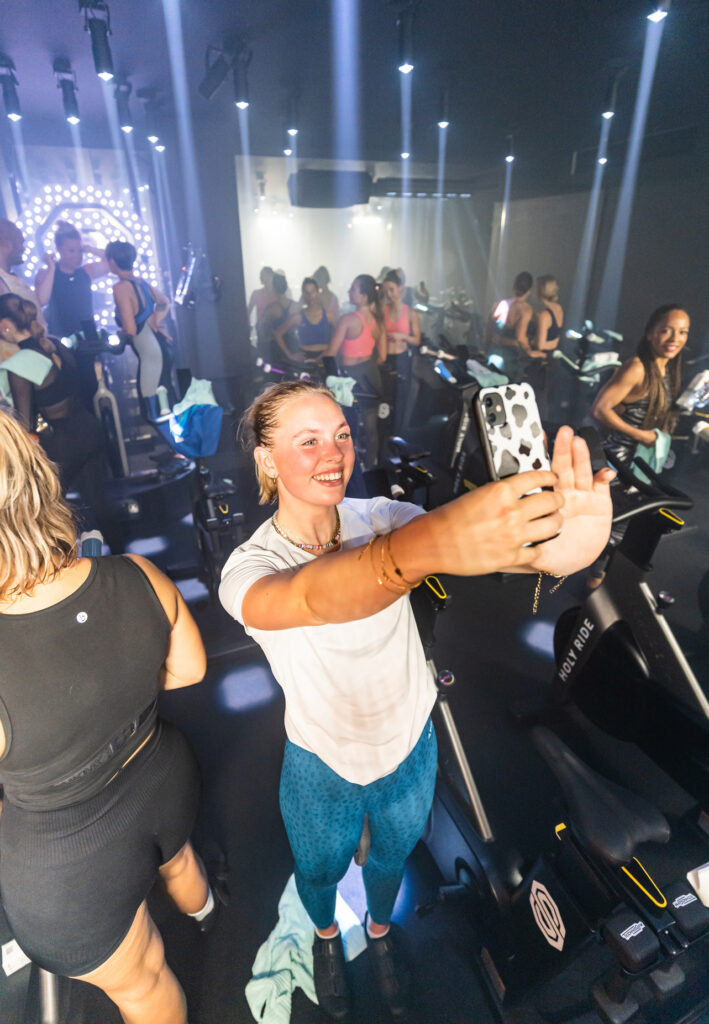
User-centric programming
This realisation led Jarz and her team to create a new programme – SclptCycle – that she describes as “a body-shaping programme that happens to be on a bike”.
She explains: “Whenever we create a new programme, our research always begins with the end user. And what we’re seeing quite clearly – both in the different cycling classes we’ve sampled and from member research at my own club – is that people don’t necessarily want to push themselves too hard.
“Younger women in particular… they want to do something, but the idea of a really tough workout stops them going to the gym at all. They want to move, but they also want to feel comfortable and have fun. They want to do things because they enjoy them, not because they feel they have to. For them, something really is better than nothing.
“They also want to feel successful from the word go. All the complex choreography we see in cycling classes… it doesn’t always work for people. It’s great for some markets – places like Amsterdam, for example – but not so good elsewhere. I call it ‘catwalk programming’. It’s up there as the exciting new concept, but it isn’t instantly ‘wearable’ outside of the big cities.
“I think that’s one of the big mistakes our sector makes: we lose sight of the consumer. People who love fitness design programmes for other people who love fitness, forgetting that this audience is relatively small.
She continues: “For SclptCycle, we took the essence of the catwalk programming – the fun, the dancing on bikes, the great music – and we modified it. We made it more accessible. We created an easy-to-follow class that’s about entertainment, fun, moving on your own terms and releasing stress, with a festival vibe courtesy of a great soundtrack.
“We’re very clear in our guidance to clubs: don’t launch SclptCycle with your regular Spin or Sprint instructors in the saddle.”
“We also made it a full-body workout by adding special tubular hand weights that you use while seated on the bike – but importantly, not while you’re pedalling. The grit inside the tubes shifts from side to side so it really works your core, not just your arms. They were designed for us by a Dutch physiotherapist and they’re great: we already use them in other House of Workouts programmes.”
A targeted audience
SclptCycle soft-launched at Saints & Stars in early September and has since been introduced at a number of clubs in the Netherlands. And the new programme is getting a lot of great feedback, says Jarz: “Younger girls and women love it. It isn’t just for women, of course – we’ve recently done a brilliant session at Nike HQ in the Netherlands, where men as well as women loved it. But we are unashamedly making women our primary audience, with branding and marketing that’s quite feminine. We’re deliberately marketing in a way that sets the right expectations, so we’re less likely to attract – and potentially then disappoint – hardcore Spinners.”
She adds: “Honestly, our sector needs to be a lot more diverse in its cycle programming. In all other group exercise disciplines, you’ll find more targeted classes. But in cycling, there still seems to be a belief that one class can fit all. It can’t. It shouldn’t even try. Not every class has to be for everyone.”
Quarterly releases of SclptCycle will encompass programming and music. “Instructor standards have sadly dropped over the last 10 years, as everyone now expects to be qualified in just a couple of days,” says Jarz. “Pre-choreographed programming helps ensure a consistent class experience.”
Alongside these quarterly releases, which all SclptCycle licence holders will receive automatically, House of Workouts will also sell special, limited edition classes via its app.
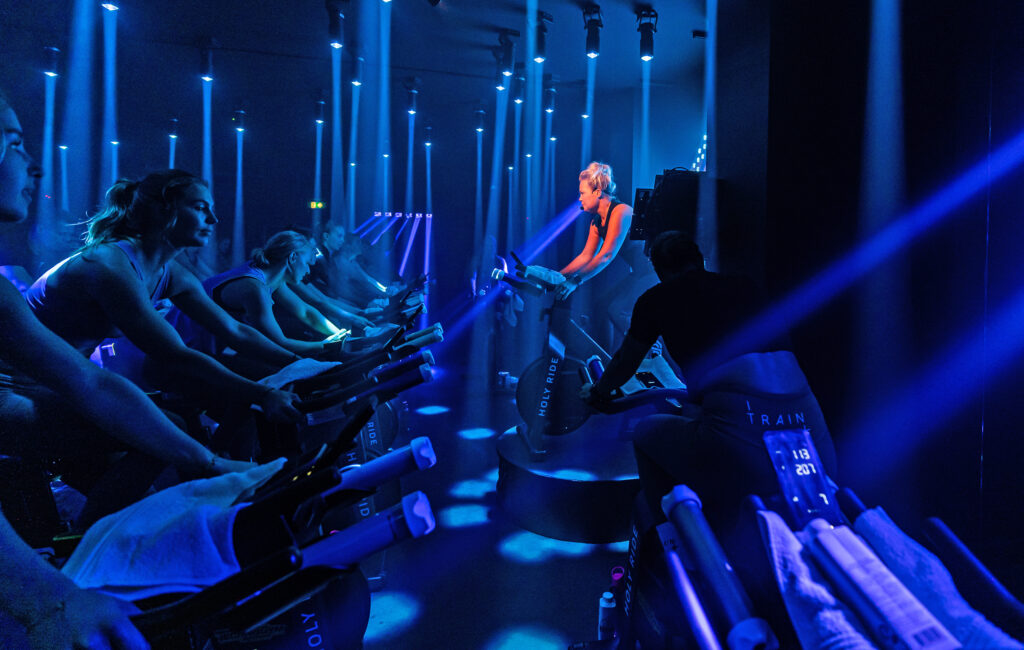
A new breed of instructor
Speaking of instructors, says Jarz, the secret of SclptCycle’s success will be very careful recruitment. “It doesn’t matter how great a programme is,” she explains. “If you market it wrong and use the wrong trainers, it won’t be successful.
“If we want to attract our intended audience to SclptCycle, hardcore has to go out the window. The whole thing has to be presented right.”
With this in mind, two-day, in-person instructor training workshops focus on fun and participant happiness rather than data. “We turn instructors into entertainers, teaching them to deliver our classes with a wink and a smile,” says Jarz. “Some people get it quicker than others, but we have tools up our sleeve to help people understand this is a new approach to cycling and they should leave all their preconceptions behind.
“We’re also very clear in our guidance to clubs: don’t launch SclptCycle with your regular Spin or Sprint instructors in the saddle. They will be too set in their ways. Bring in and train different types of people to coach this new class; you can always introduce your existing cycle instructors later, once they’ve experienced SclptCycle and are open to this new way of teaching.”
Growth plans
SclptCycle will be live in around 50 clubs in the Netherlands and Belgium by 1 January 2023, with BasicFit also set to introduce the class to its cycle studios in January.
“In the longer term – maybe six months to a year – we may make SclptCycle class content available digitally too, but for now it will only be available as a live class,” says Jarz. “That contact with the instructor, that social aspect… particularly for a programme like SclptCycle, that’s so important.”
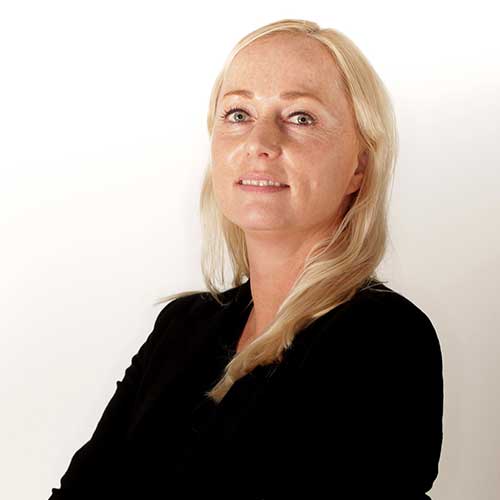
THE EARLY ADOPTER
Debbie Koekkoek
GX manager, SportCity
”We see SclptCycle as a great fit for our SportCity brand,” says Debbie Koekkoek, group exercise manager for the Netherlands-based chain of 113 health clubs.
“We’re an all-inclusive operation in the value segment and we want to make sports and fitness accessible and enjoyable to all.
“Live group exercise is an important part of what we do, and that includes our fantastic SuperCycle studios – our indoor cycling brand – where we offer freecycle classes and Les Mills RPM across the board. Some clubs also offer Les Mills Sprint.
“Compared to five years ago, though, we’re seeing indoor cycling lose ground to other types of class – mind-body, for example, which is booming across our estate. Then you look at how well the indoor cycling boutiques are doing, filling their classes throughout the day. I want more for our SuperCycle studios!
“There’s definitely a male bias among our indoor cycling regulars at the moment, so we wanted to find something that could attract a new audience, getting more women into the studio. We’re proud to be the first sports club chain to introduce SclptCycle to the Dutch fitness market.”
“I’m not normally an indoor cycling fan, but this is different. You almost forget it’s a cycling class!”
A true fusion class
Koekkoek continues: “I’d been searching for something new to introduce to our SuperCycle studios and I heard about a new programme: SclptCycle. I went to a trial class at House of Workouts and was immediately very enthusiastic about it.
“I’m not normally an indoor cycling fan, but this is different. You almost forget it’s a cycling class! Our other cycling classes are all about cardio. SclptCycle is a total body workout. It’s a total experience.
“Having done boutique cycle classes where you use light weights while pedalling, I was surprised when in SclptCycle we suddenly turned up the resistance as high as possible – so we couldn’t pedal – and picked up the resistance training tubes. I know these tubes from the BRN classes we already offer at our clubs – another House of Workouts programme – and they give your upper body and core a seriously good workout. I think it’s brilliant to introduce them into the cycling studio. It ensures SclptCycle is a true fusion class, not just about the bike.
“And that’s why I love it, and why I believe it could be just what we’ve been looking for: the concept that brings more people, and especially women, into our cycling studios.”
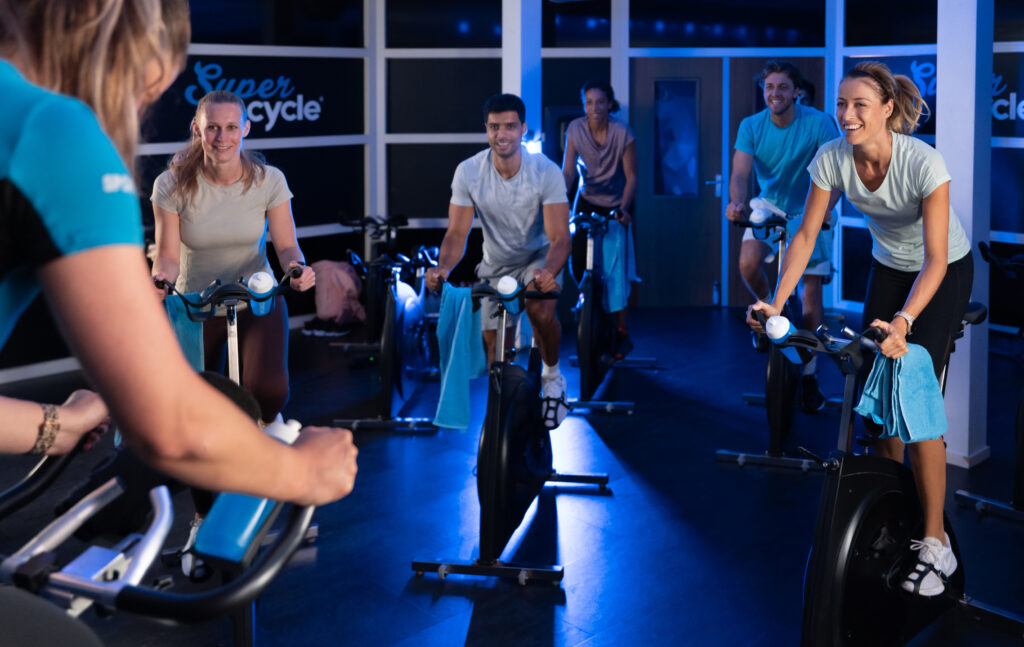
Time to think different
“By the end of 2022, SclptCycle will be available in multiple SportCity locations,” says Koekkoek. “Classes will be led by SportCity instructors who haven’t previously been indoor cycling instructors. They currently teach classes such as BRN or BodyShape and they’re all enthusiastic about teaching SclptCycle. I truly believe their regulars will follow them into the cycling studio.
“Because the way we’re talking about SclptCycle, it will appeal to a new audience: it’s a party on a bike, a full-body workout, a calorie-burner. It’s a class where you use the bike as just one of the tools to achieve a fantastic full-body workout that’s also great fun, with great music and great lighting.
“If it turns out our regular cyclists also love the class, with its 45-minute format complementing the 60- and 30-minute classes already on our timetable, that’s a positive outcome too. But it is something a bit different and I fully expect it to bring new people to group cycling.”
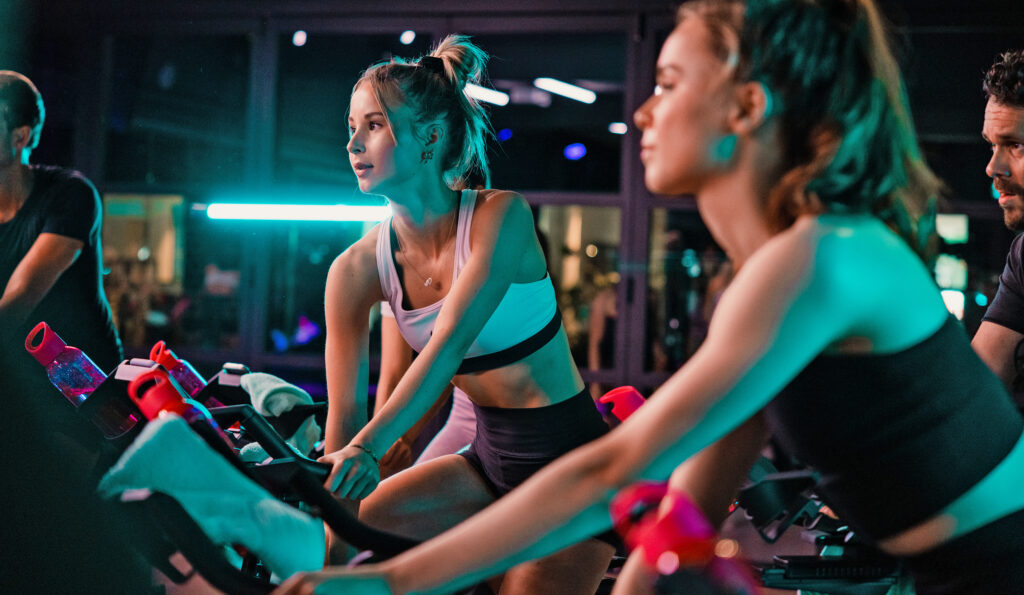
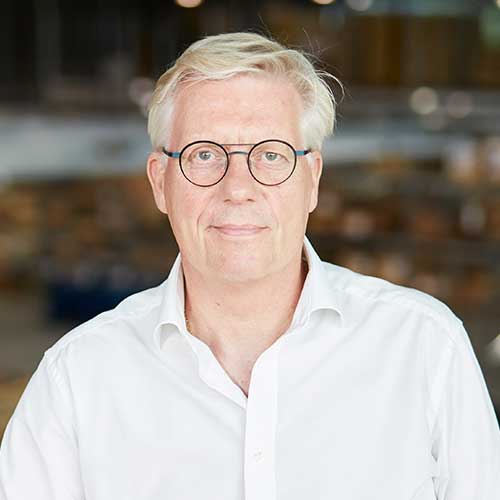
THE PARTNER
Uffe A Olesen
CEO, BODY BIKE International
”BODY BIKE is thrilled to be selected by House of Workouts as the preferred bike for its fantastic new SclptCycle programme,” says BODY BIKE CEO Uffe A Olesen.
“As soon as we met with Renata and her team at House of Workouts, we knew this was something we wanted to be part of. Their passion is so infectious. The way they see things so fresh and exciting. Their desire to do things differently so creative and inspiring.
“And over-arching all of this is a wonderful, overwhelming sense of fun in everything they do, including this vibrant, positive, life-affirming new indoor cycling programme. It feels like no coincidence that SclptCycle has come out of party-loving Holland! Who wouldn’t want to be part of this?”
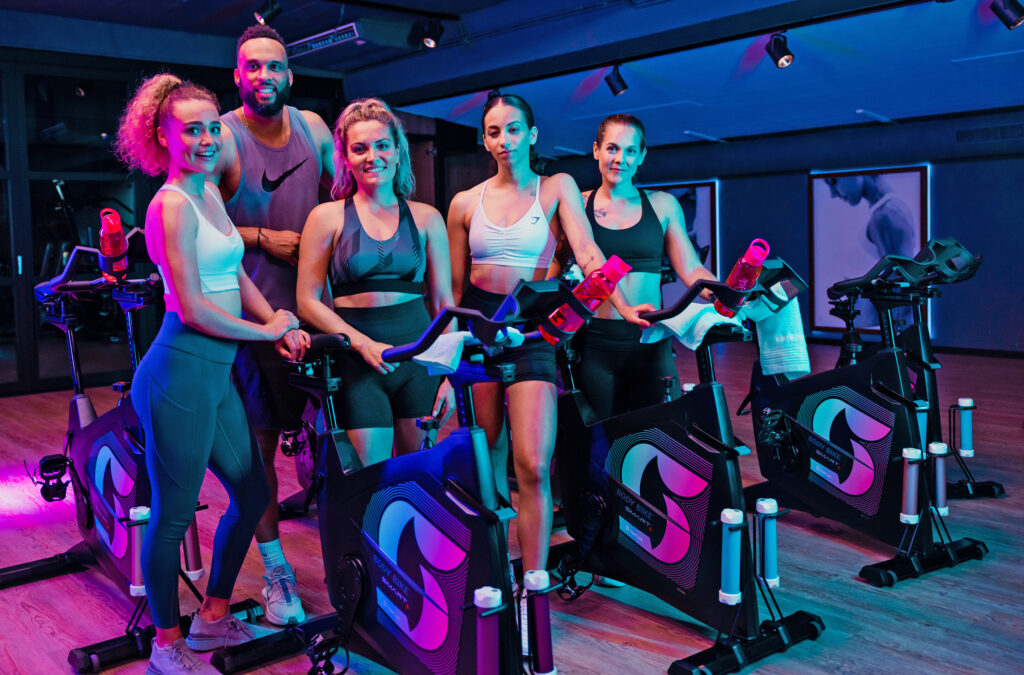
He adds: “With so much stress and negativity in all of our lives right now, SclptCycle is a programme the world really, really needs. It isn’t about stats. It isn’t about pressure to perform. It isn’t about comparing yourself to others in the room. It’s about happiness, escapism and fun”.
“I believe it has all the ingredients to be the next global fitness phenomenon.”
“There’s an overwhelming sense of fun in this vibrant, positive, life-affirming new programme”
Working in synergy
Olesen continues: “Beyond the SclptCycle programme, there are also lovely synergies between BODY BIKE and House of Workouts that make our partnership very natural.
“Both of us are based in Europe, where we build things that last; our shared passion for indoor cycling is matched only by our mutual determination to achieve the highest possible quality in everything we do.
“Renata wanted a bike that would provide an exceptional ride class after class, year after year. BODY BIKE delivers on that.
“Our companies both have strong environmental and social agendas too, including a focus on diversity and inclusion in the workplace: we both employ people with disabilities in our manufacturing processes. Meanwhile, BODY BIKE Smart+ OceanIX is built using plastic from recycled fishing nets – we’re working on other sustainable products as we speak – and House of Workouts’ weighted tube, the other piece of equipment used in SclptCycle, is manufactured using recycled aluminium. The plastic will soon be recycled too.
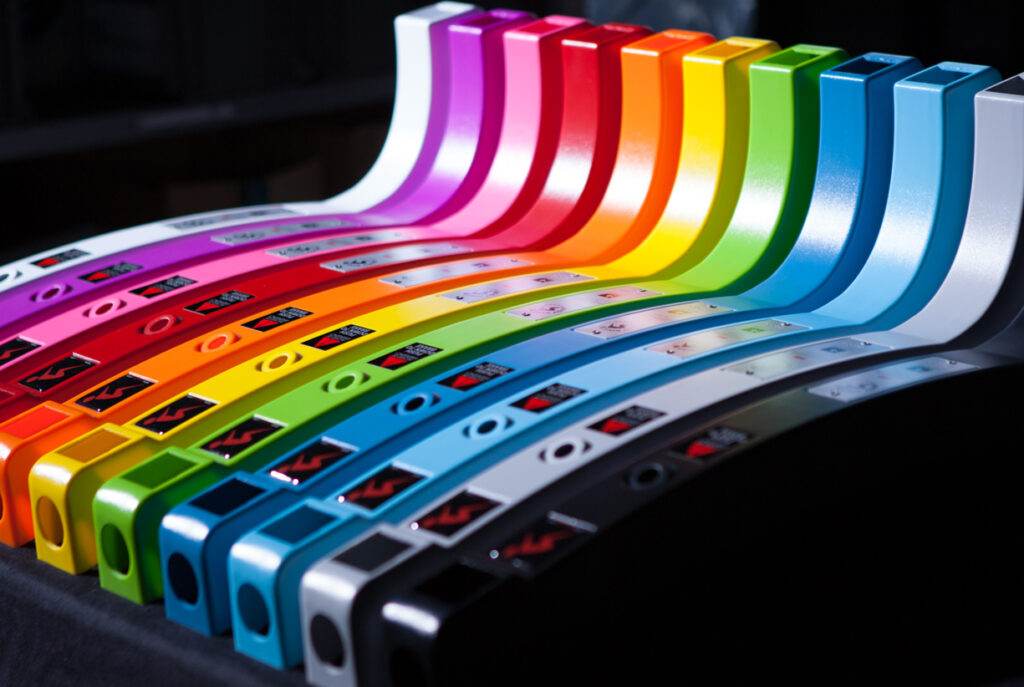
“It feels like no coincidence that SclptCycle has come out of party-loving Holland! Who wouldn’t want to be part of this?”
“Those tubes are available in all sorts of colours and can be branded or have slogans put on them – yet another opportunity to have fun when delivering SclptCycle in your club. Meanwhile, BODY BIKE’s covers are available in 10 colours and can accommodate all sorts of branding and imagery to create a studio with a real wow factor.
“Together, BODY BIKE and House of Workouts want to bring new life to cycling studios by making indoor cycling fun again – through the programming, the environment, the marketing, the instruction, and of course the ride.”
BODY BIKE and House of Workouts will be together at FIBO 2023, offering a chance to see SclptCycle in action. “Make a date for 13–16 April, Exhibition Centre Cologne, to visit a very special stand indeed,” says Olesen. “Hall 6, stand A13… Meet us in the woods!”

